Thanks to my lovely friend Linda who kindly volunteered to leave my brother and crazy puppies for a week to look after my dog Murphy, I was able to resume my annual May trip to Mull after an absence of 2 years, where I spend a week in the company of my parents enjoying the wildlife.
It was great to be back on the island, and although the weather forecast looked pretty awful, I was determined to enjoy my visit. The wonderful thing about living where I do now, I don’t feel any major pressure to get out and take photographs the way I used to when going on holiday – I do that almost every day of my life now so I could just chill. The only thing I really wanted to do, and the reason I insist we go to Mull in May (the Island is significantly busier now than it used to be at this time of year) is so that I can, weather-permitting, visit Lunga and the puffins. Fortunately the Turus Mara boat was able to sail on one day I was there, so puffins were go! More (a lot more) on them later in this blog.
I arrived on the Sunday, a sunny day, so my parents and I headed out to the local loch to see what we could see. Very quickly I spotted an otter on a distant rock, too far away to photograph. I did manage an image or two of a little ringed-plover that was scuttling about.

There were also some newborn lambs which were super cute.
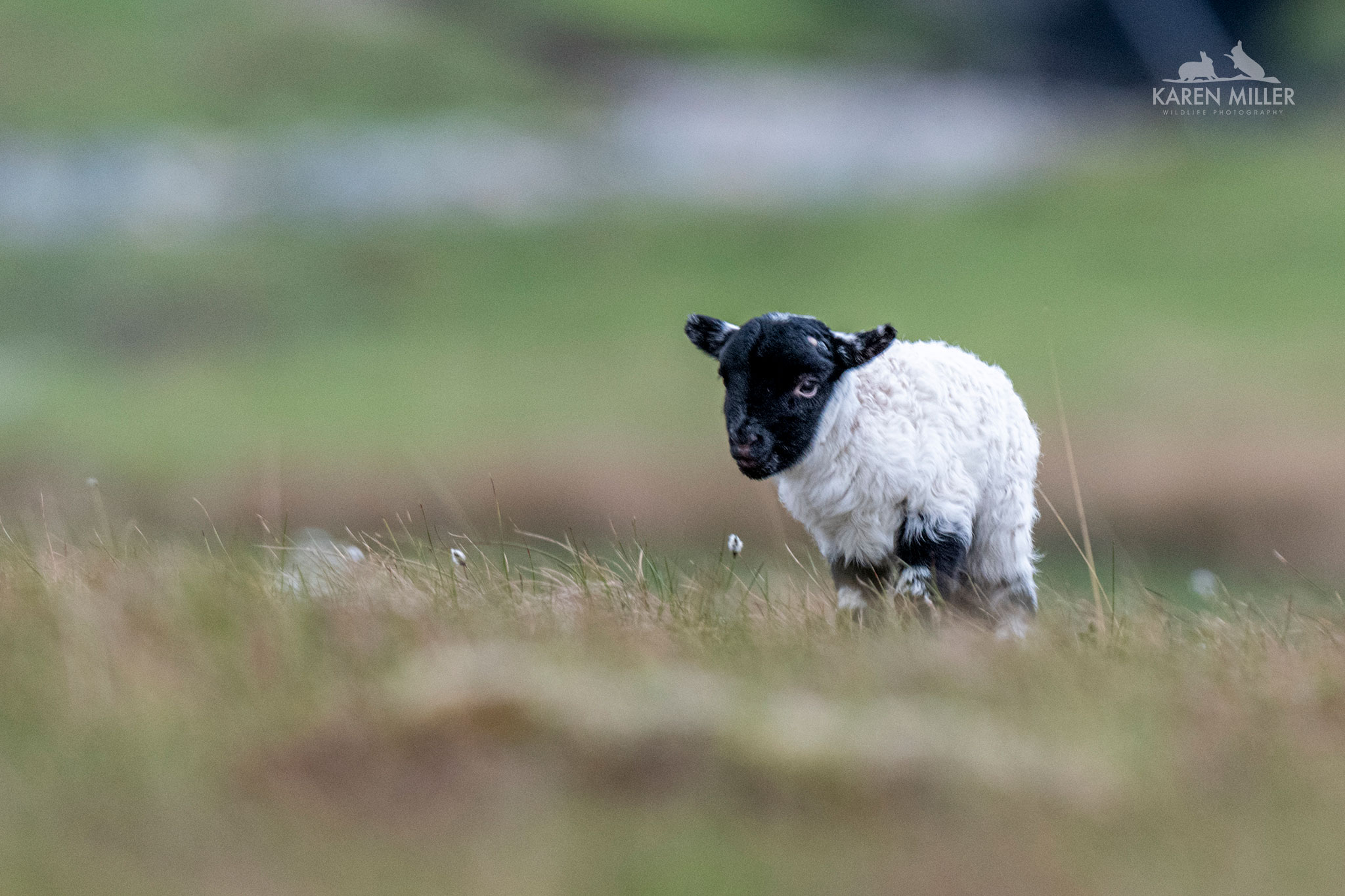
The weather on Monday was truly awful so we wimped out of going anywhere, staying home and eating chocolate! Tuesday we sat watching a pair of hen harriers in a very distant food exchange before my Dad’s car made a horrible “bang”. Transpired a spring had gone as we stood watching the harriers. We limped home and I left them to figure out where and how to get it fixed and went out by myself for the afternoon. I sat and watched a different male hen harrier quartering a hillside for a bit which was great. Mull is an excellent place to see these birds as there’s no persecution.




As I drove to my next destination I passed Pete Walkden, a friend who relocated to Mull last year and now runs wildlife photography workshops on the island. Lovely to see him and meet his clients, if only briefly. I then went looking for otters. The tide wasn’t great though so I only had a brief glimpse of (I think) a dog otter that had just finished eating and was heading in the wrong direction.
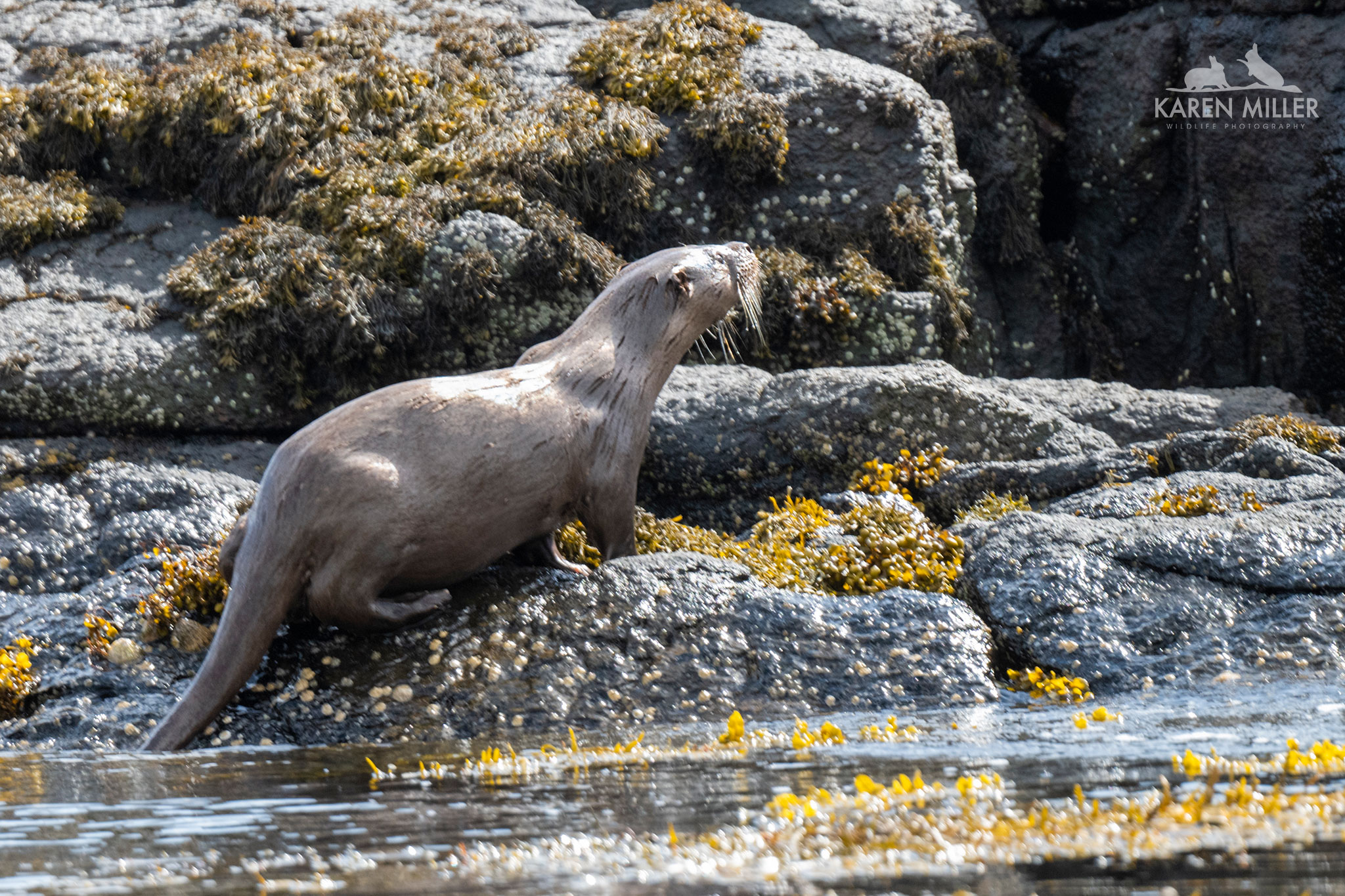

Wednesday was Lunga (see below). Thursday I was family chauffeur and we visited Loch Buie. It was another wild day but we managed a walk in between rain showers. Rather than wildlife, all I photographed on this day was livestock – sheep and highland cows!!
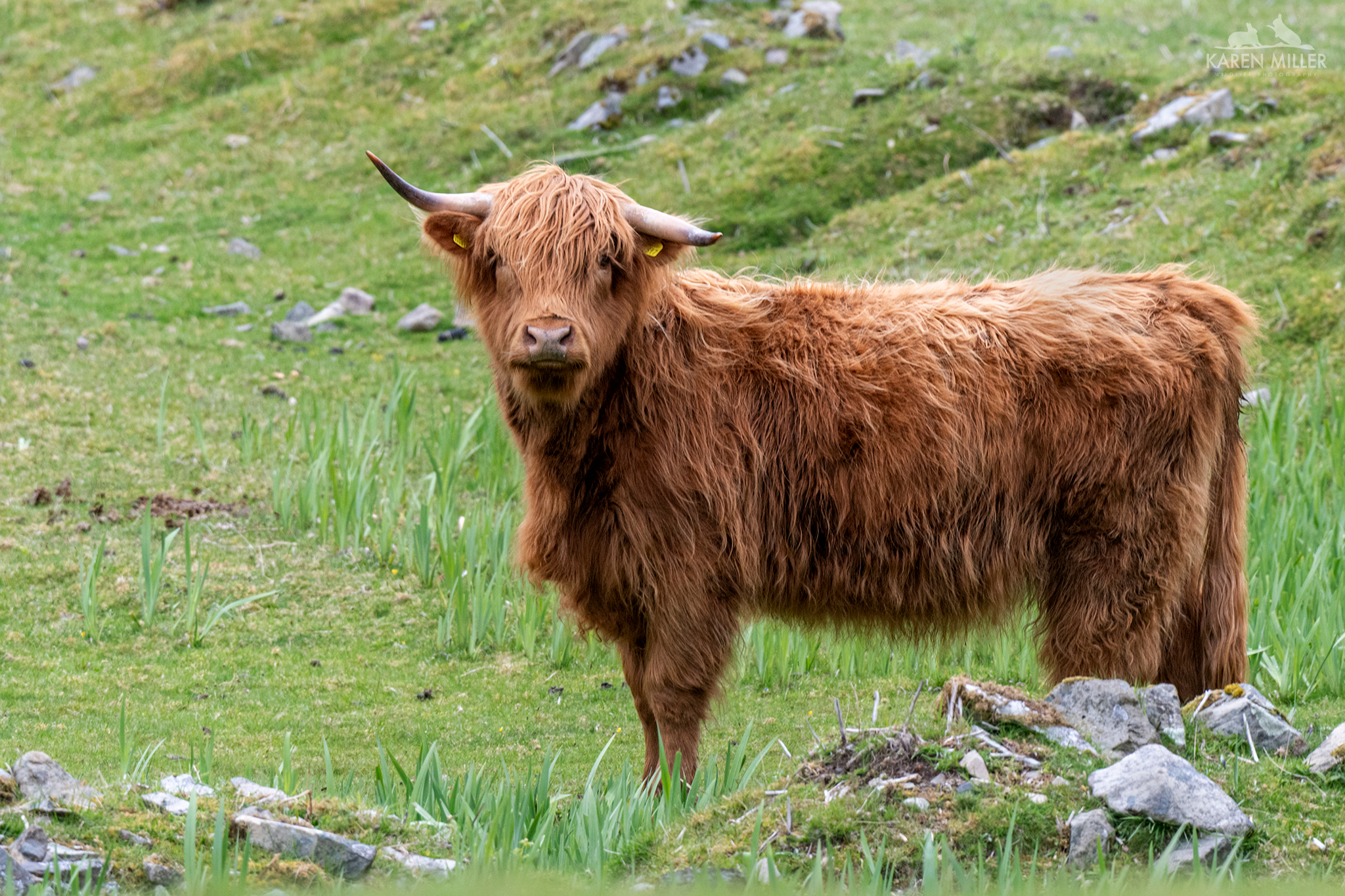

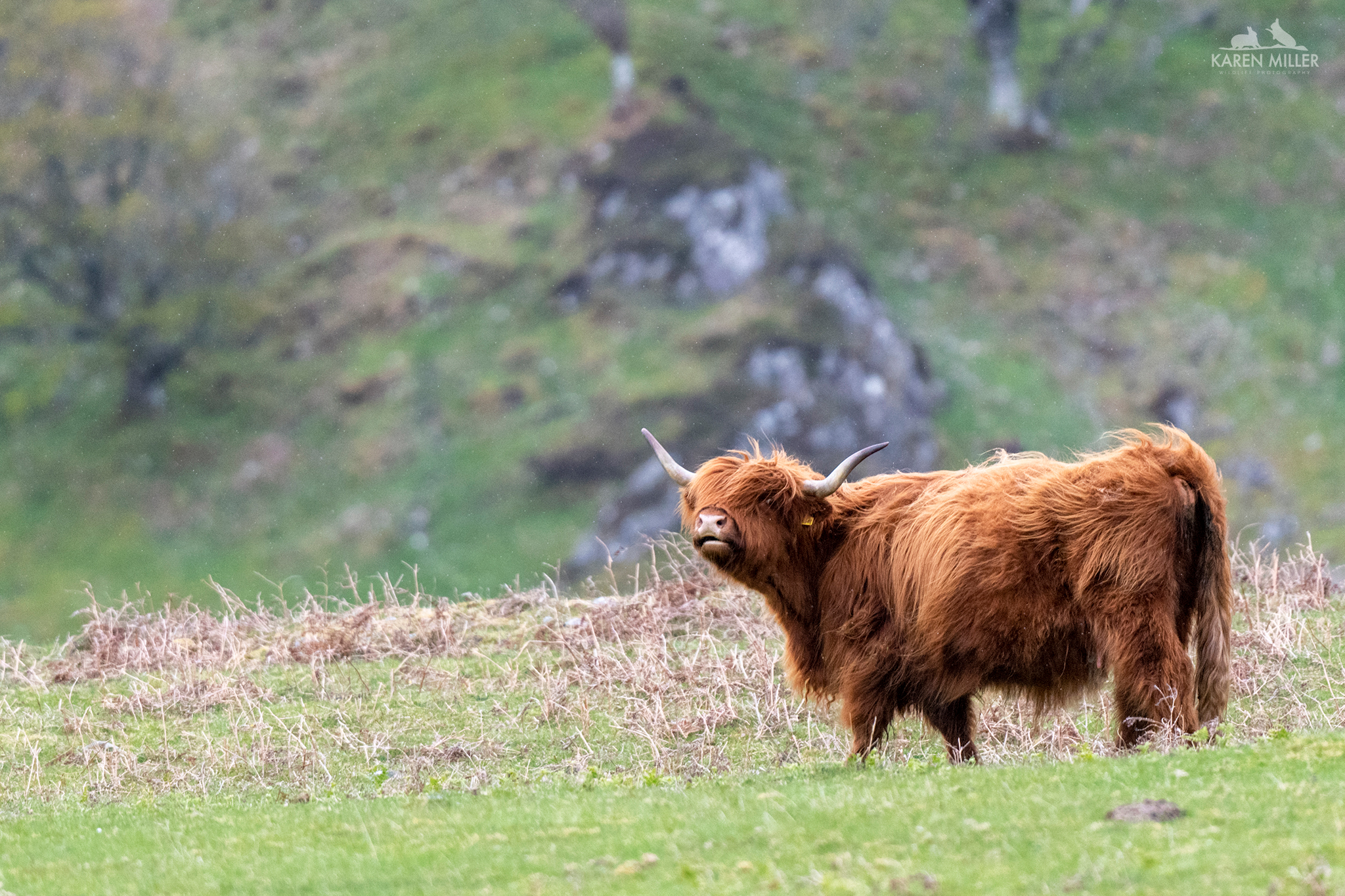

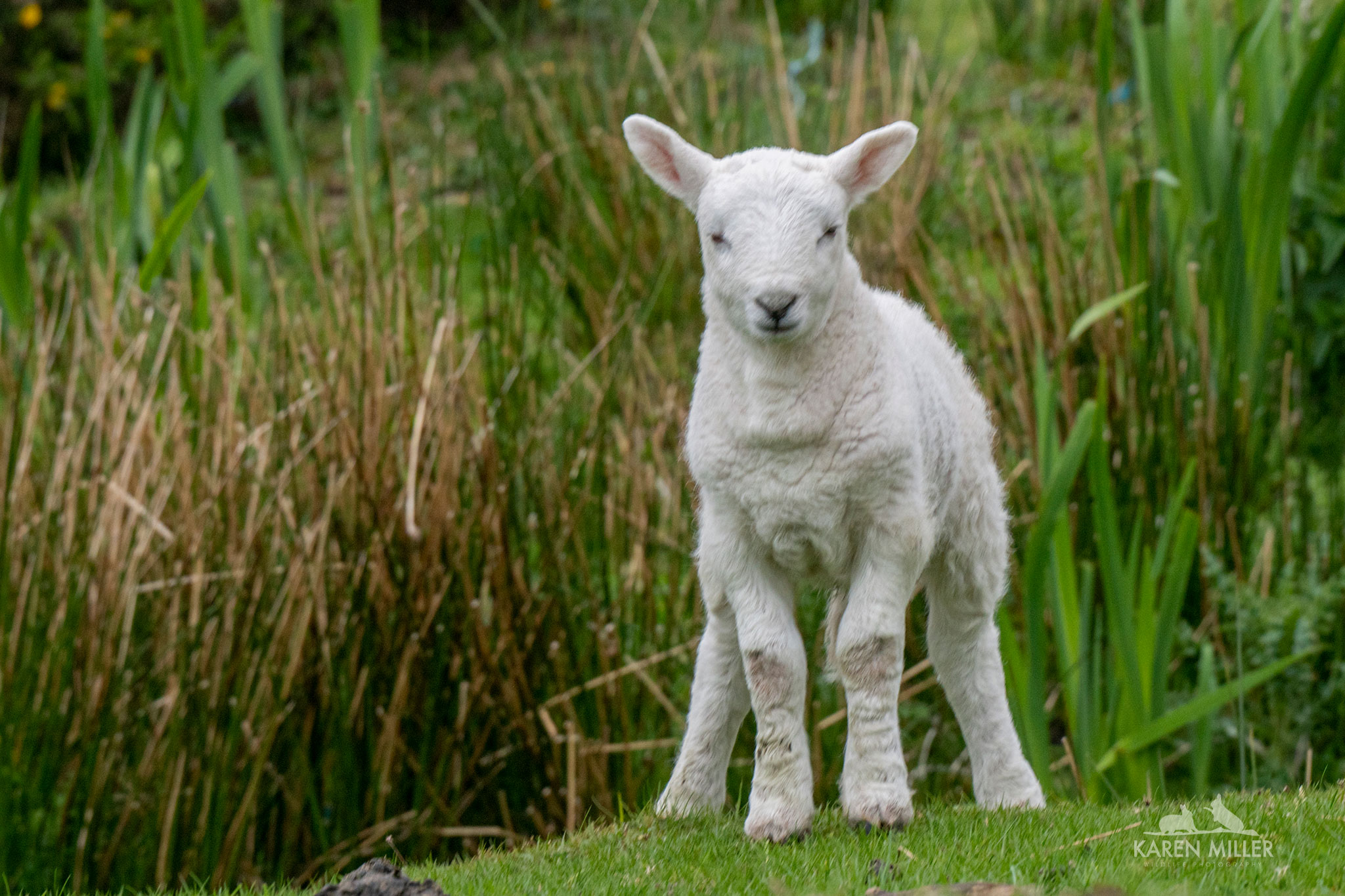

Friday, yet another miserable day was spent driving about mostly watching the birdlife out the car window. I did spend an entertaining half an hour enjoying the antics of a pair of common sandpiper. One was relentlessly chasing the other, displaying as it went.
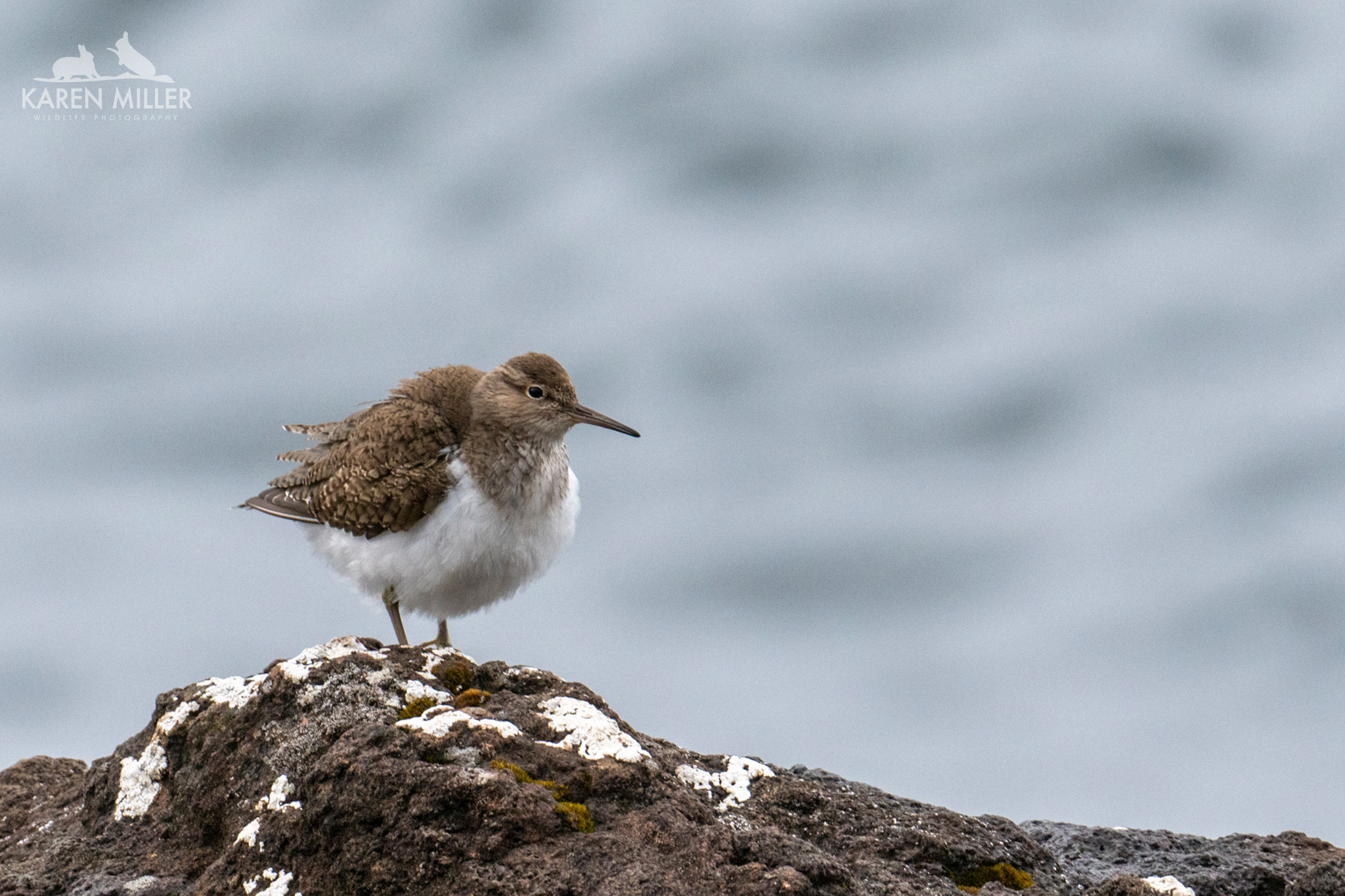

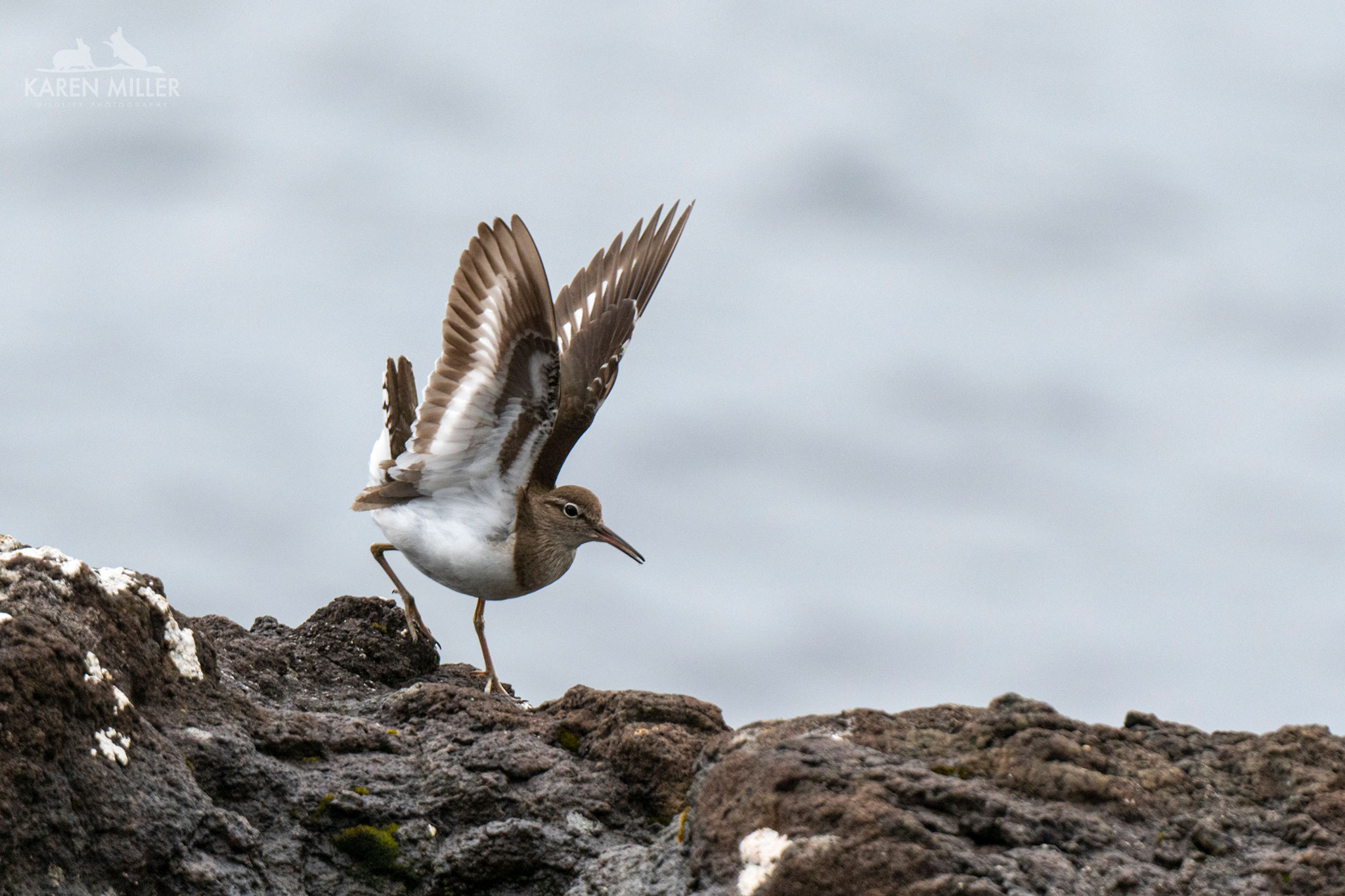
A wren popped up next to me, and a wheatear made an appearance too.


A little later I found myself lying on the grass attempting to photograph the skylarks and meadow pipits as they searched for food.


Saturday came all too fast and it was time to return home. It was a shame the weather was so poor, but it was nice to be back. That said, it was lovely getting home and checking on all my local wildlife too! But that’s for another blog.
The rest of this entry will be about Lunga with some tips based on my personal experience of how to photograph the puffins on this island.
At times during the early part of the week I was unsure I’d make it over to Lunga as the winds were forecast to be fairly strong, to very strong. Fortunately they eased enough to allow the Turus Mara boats to sail on the Wednesday. As always, I was on the Big Bird Trip which gives 4 hours on Lunga as well as half an hour on Staffa. This half hour on Staffa always frustrates me a bit because I’ve seen Fingal’s Cave countless times and half and hour isn’t long enough to go the part of the island where the birds are, so I end up sitting counting the minutes until we leave again. Fortunately the winds were such that landing on Staffa wasn’t an option this time, so we had an extra half hour on Lunga! The sea en route to the island was very rough, the little boat was rocking from side to side and, although normally a good sea traveller, I really felt it. I tried to keep my eyes on the horizon, but it kept disappearing. I made it though and the sun appeared as we left the boat and (in my case) bounded enthusiastically across the rocks to reach the island proper.
What I tend to do is find a spot at the initial cliff where there are flowers (bluebells and or sea thrift) and just wait for the puffins to go there and to exhibit behaviours such as billing, nest building and fighting. In my experience, staying in one place can give a better chance of observing all this over a period of time. That day however there weren’t very many puffins about and those that were kept disappearing due to regular fly-overs by a great skua.
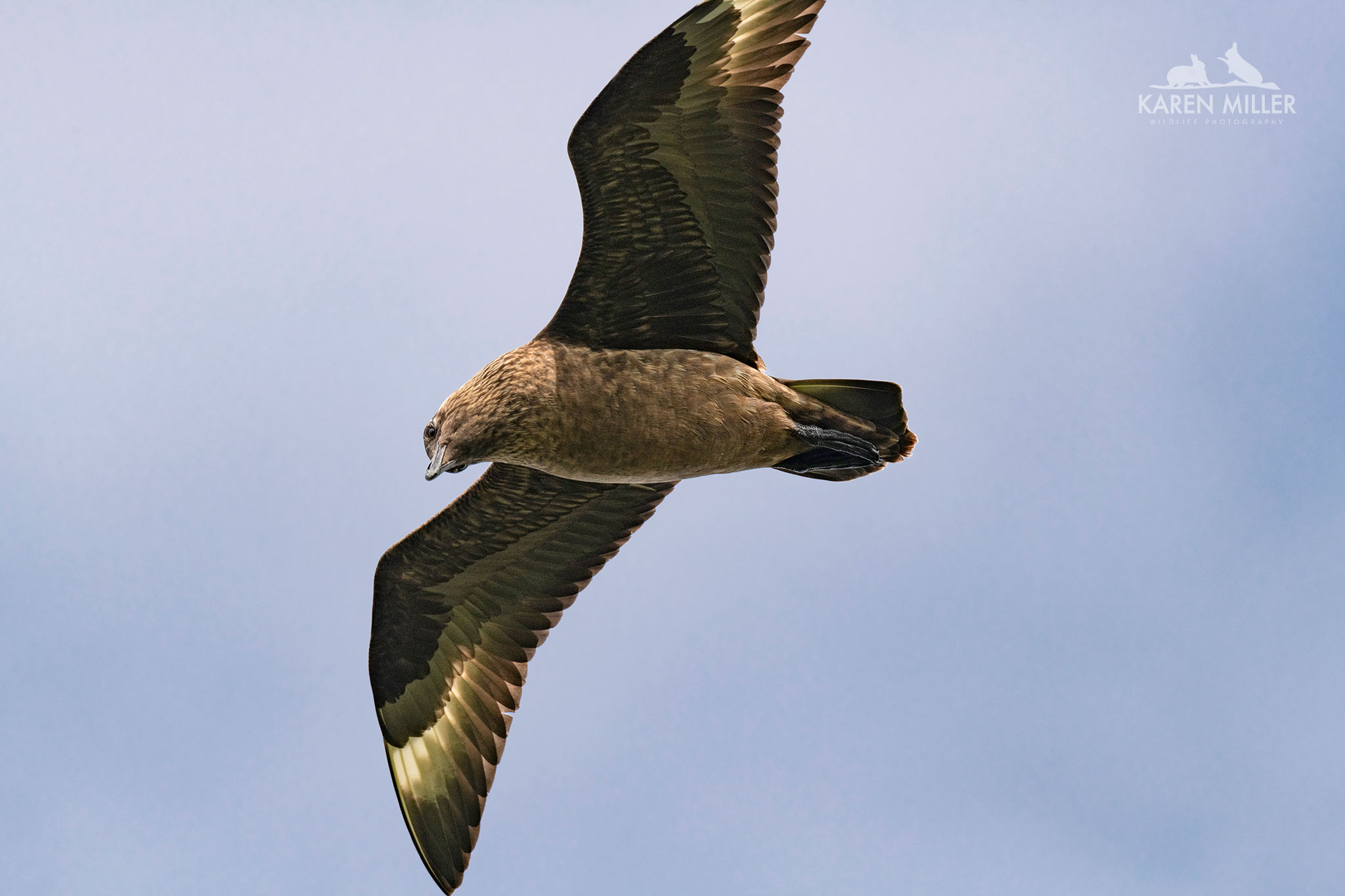
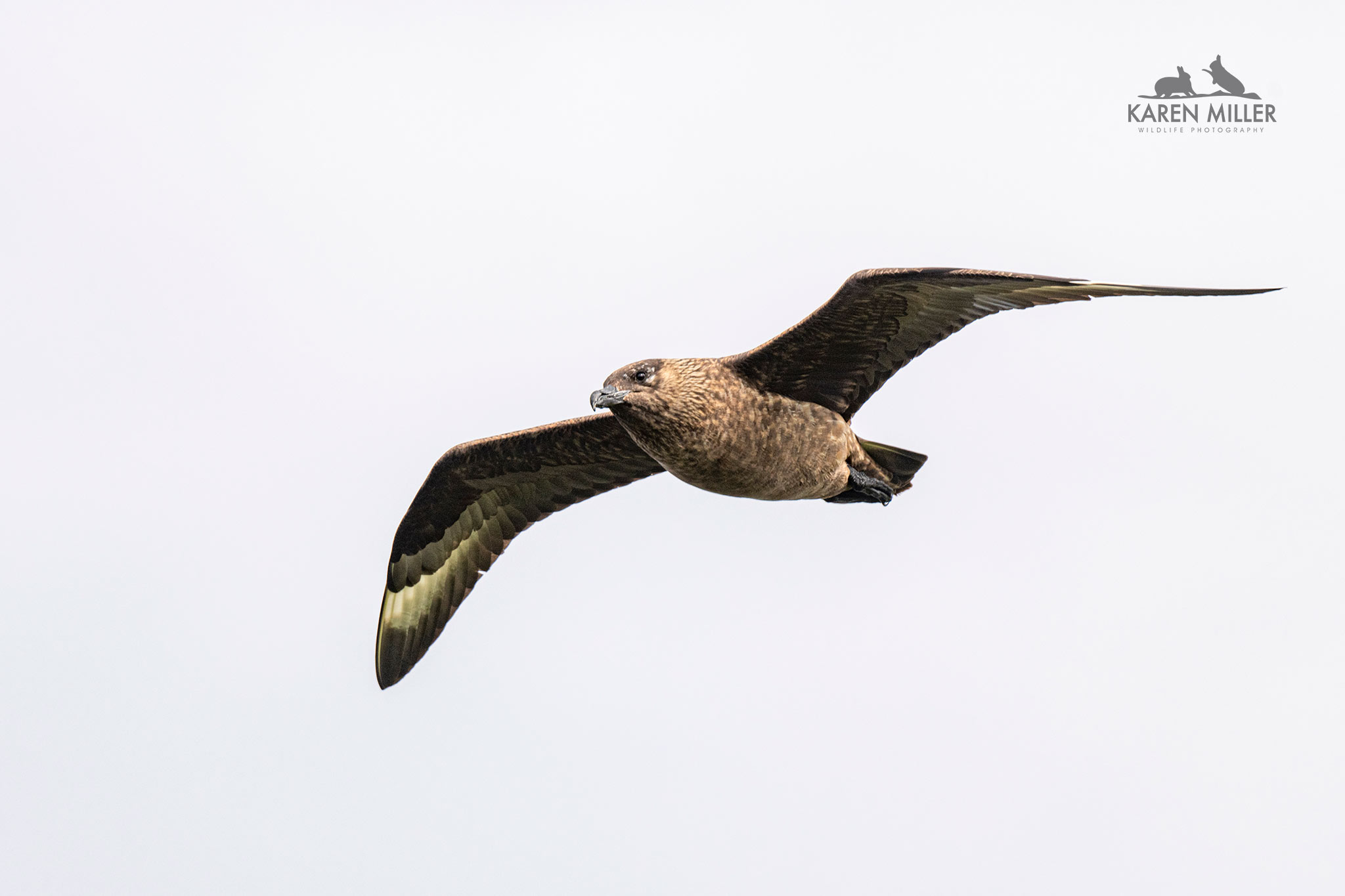

I did take a fair few portraits of the puffins here though. I liked how the wind was blowing the feathers on their cheeks. For these images, taken with my Nikon D850 and Nikkor 500mm pf5.6 lens I primarily used an aperture of f6.3-f10 and I was lying or sitting low on the ground. Being at eye level with the birds is really important. It results in significantly more engaging images than if you point the camera down at them as well as allowing for a softness in the surrounding area even at f10. The birds are close so it’s best not to use the widest aperture to ensure the whole bird is sharp (I also find that the 500mm lens is sharpest at f7.1/8). Because the birds were at the edge of the cliff the background of sea and other little islands was still blurry. It was a bright and sunny day which meant I had to be careful not to blow the highlights in the white plumage so I was deliberately under-exposing by a couple of stops (also very important!). In an ideal world it’s best to photograph puffins here (when you are going to be here in the middle of the day as opposed to early or late in the day) on a cloudy day with, at most, hazy sunshine. Unfortunately I had no choice in the matter and was just glad to make it to the island at all.



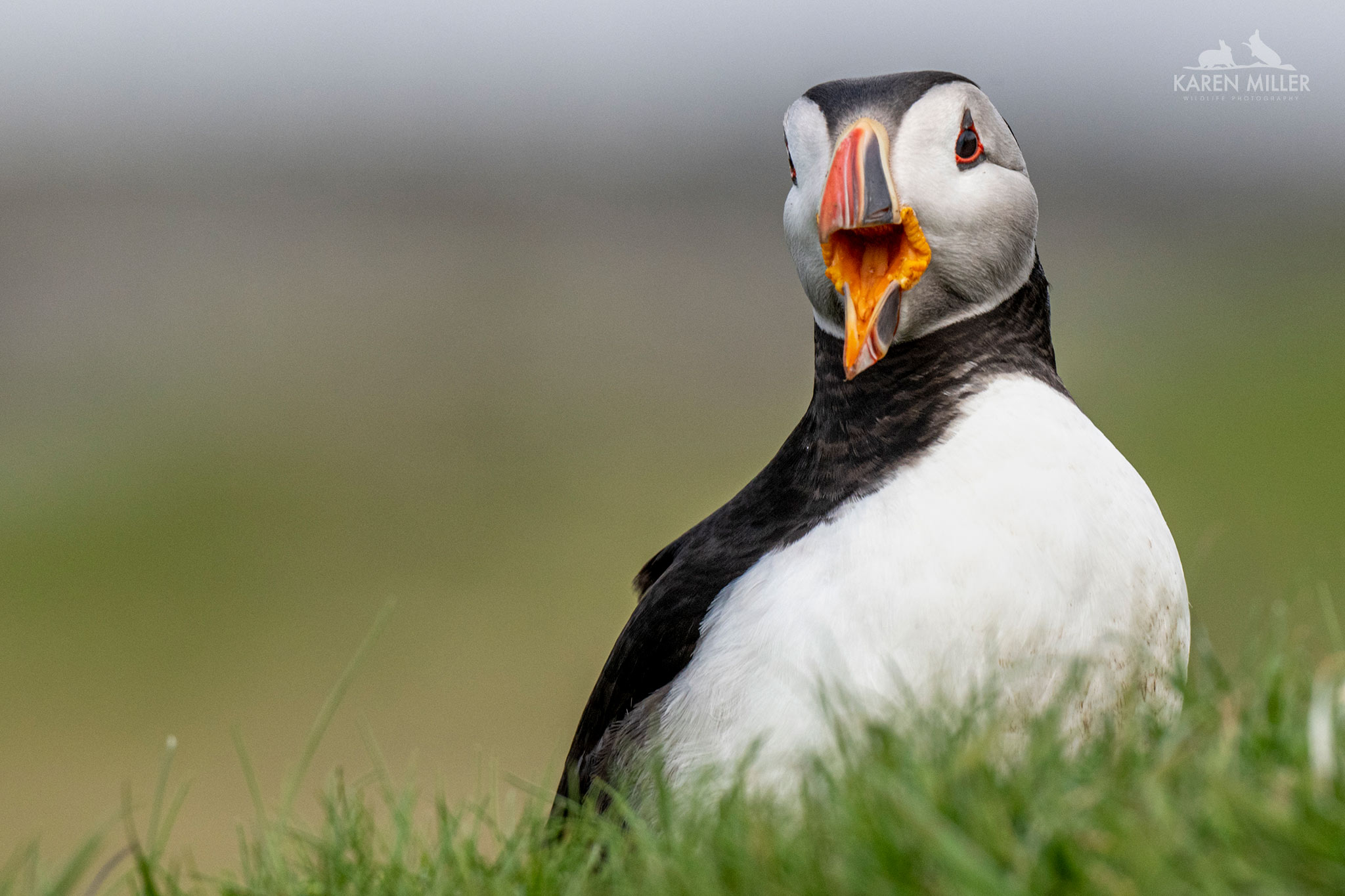

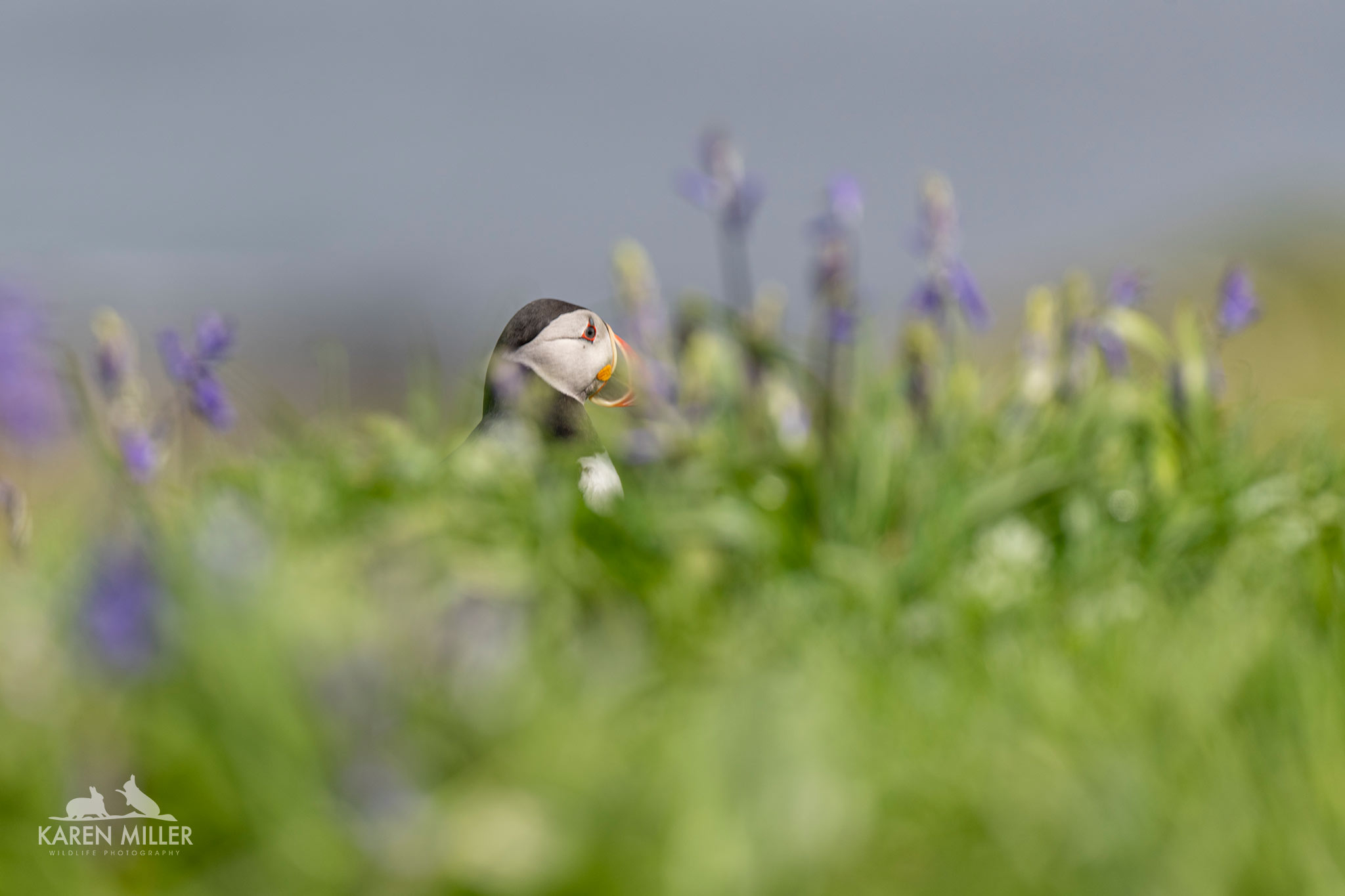
After an hour or so I had to acknowledge that this part of the clilff wasn’t really giving me what I was looking for so I moved round a little bit to an area which has a dark cliff opposite. It’s possible here to play around a bit with the exposure. I under-exposed here, and then in post production darkened the background a little more.


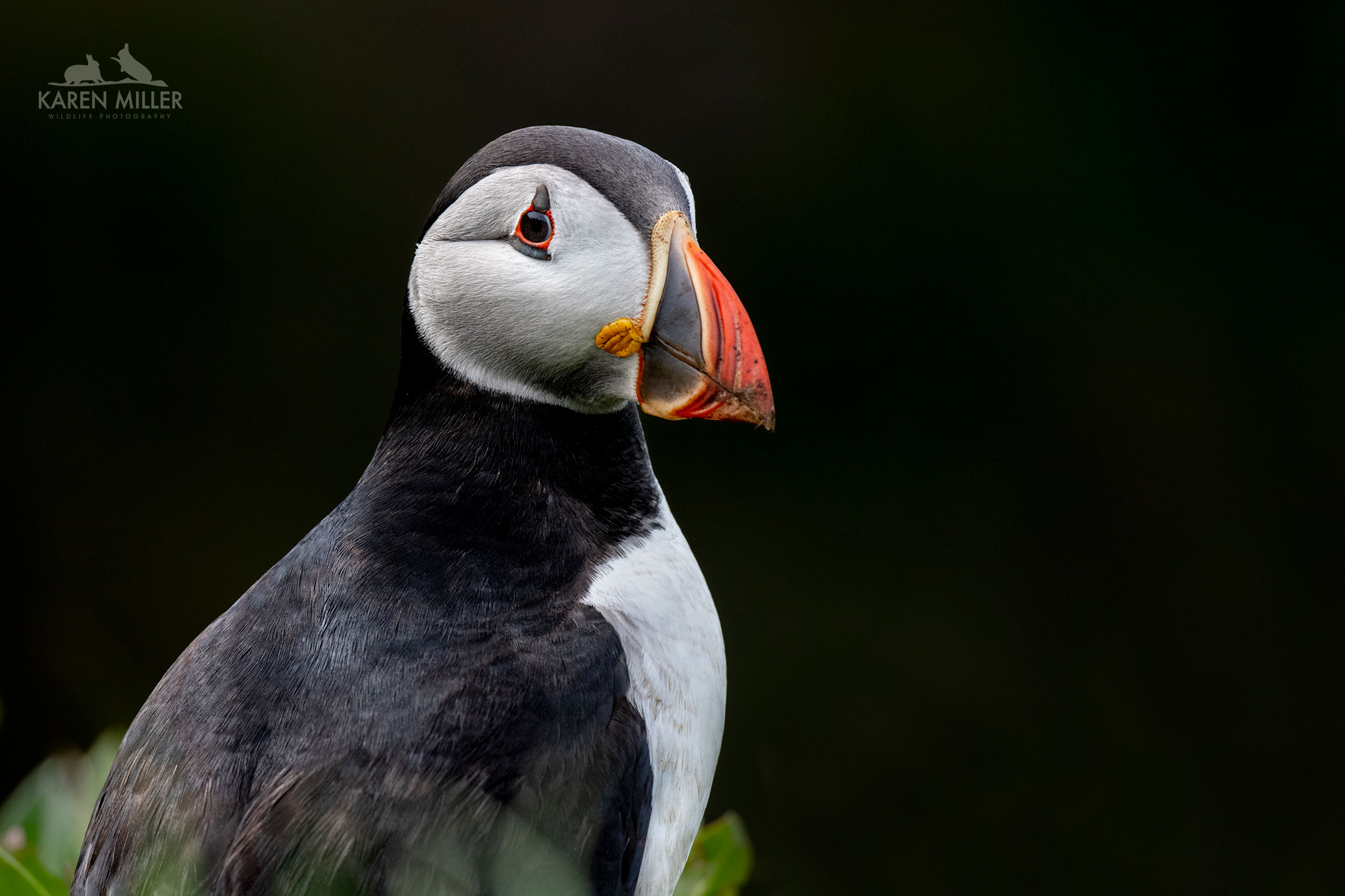
There was some sea thrift here too, which is very pretty.



I brought two camera and lenses with me. My other set up was the crop frame member of the Nikon mirrorless collection, the Z50, which is a lovely little camera. (I’m going to write about it in a future blog.) I paired this with my 70-200mm f2.8 lens. When using this combo I narrowed the aperture (f16) so that the sea had some definition.
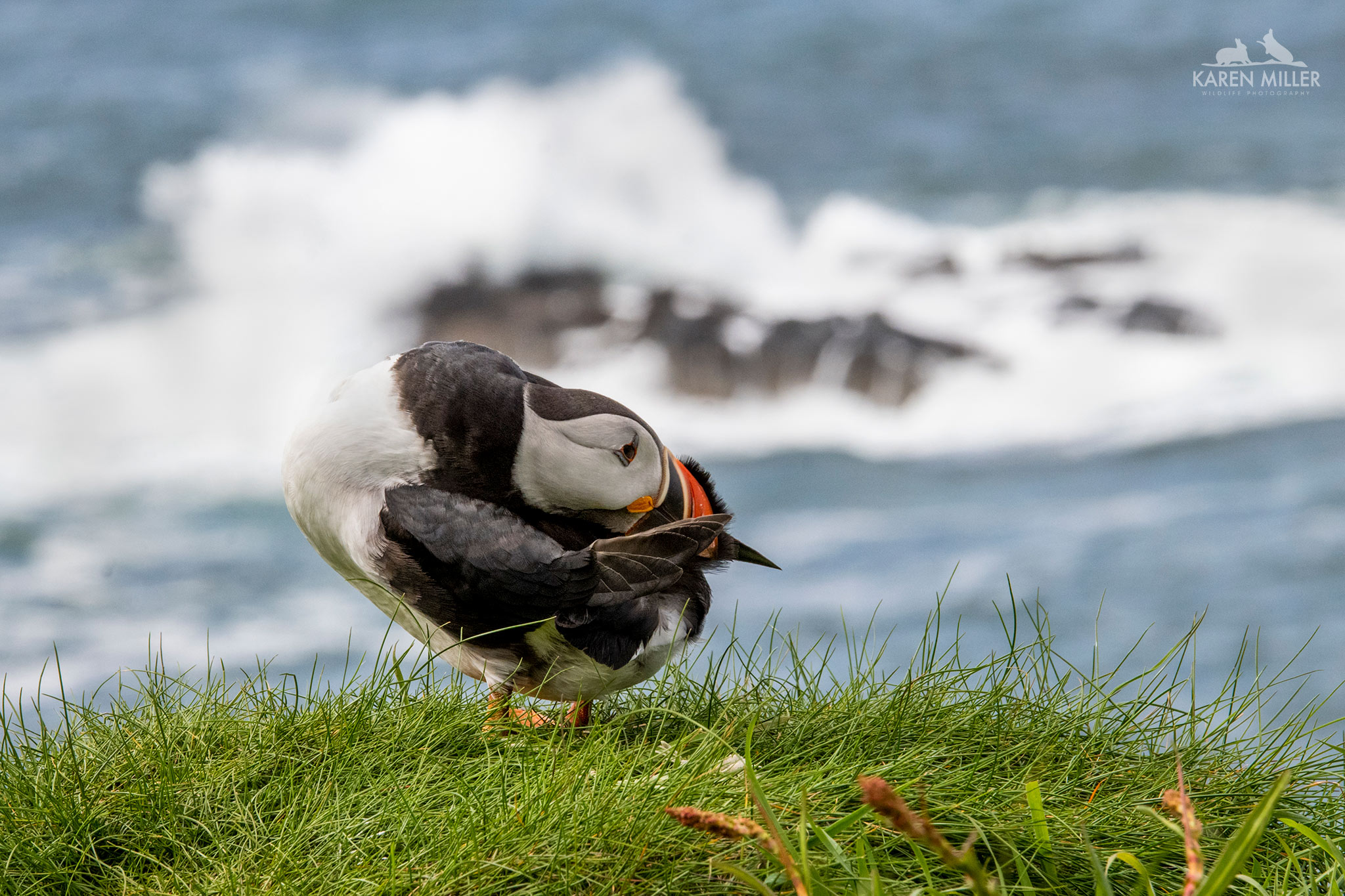
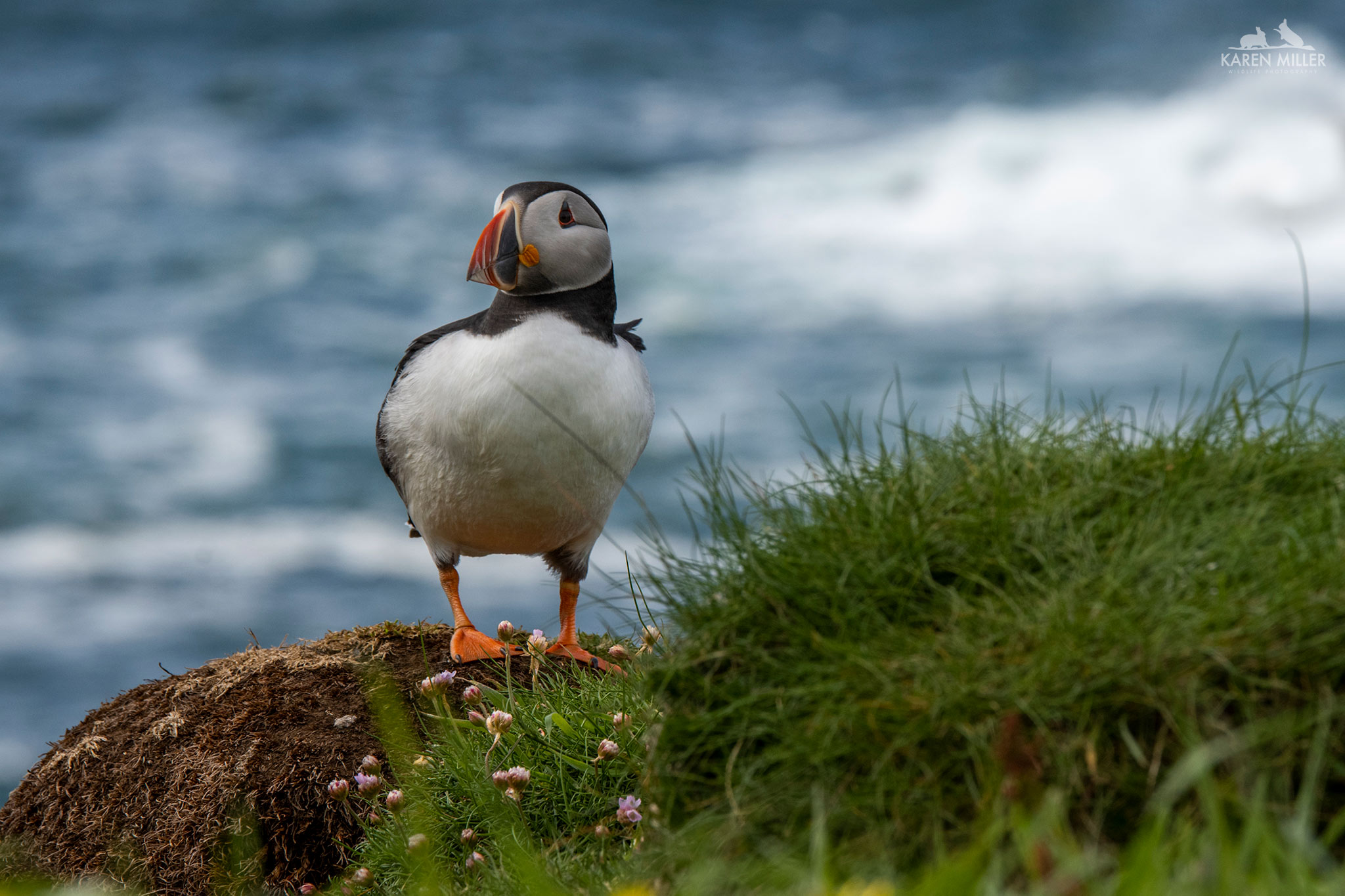


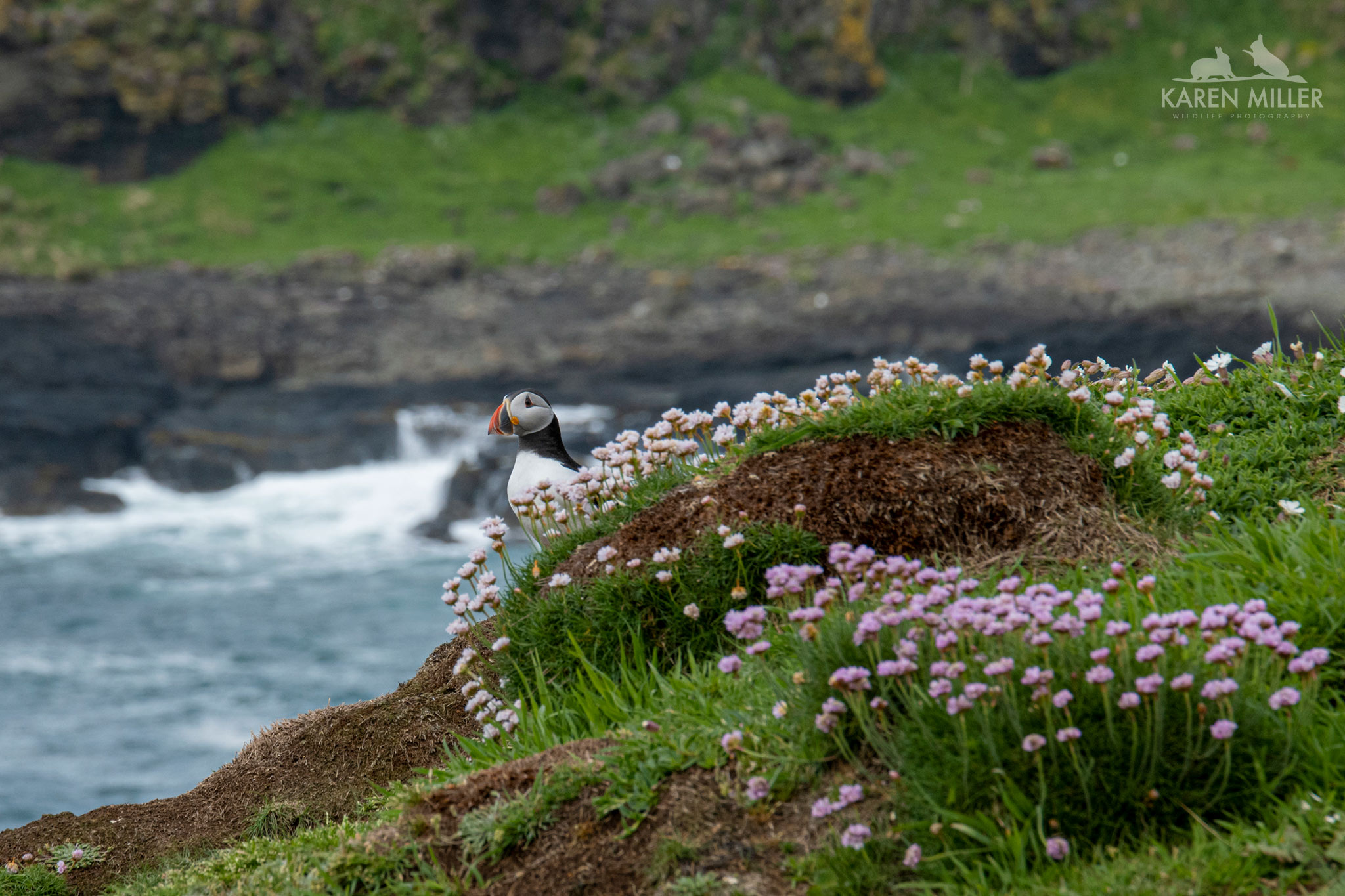
There was a rabbit here too.
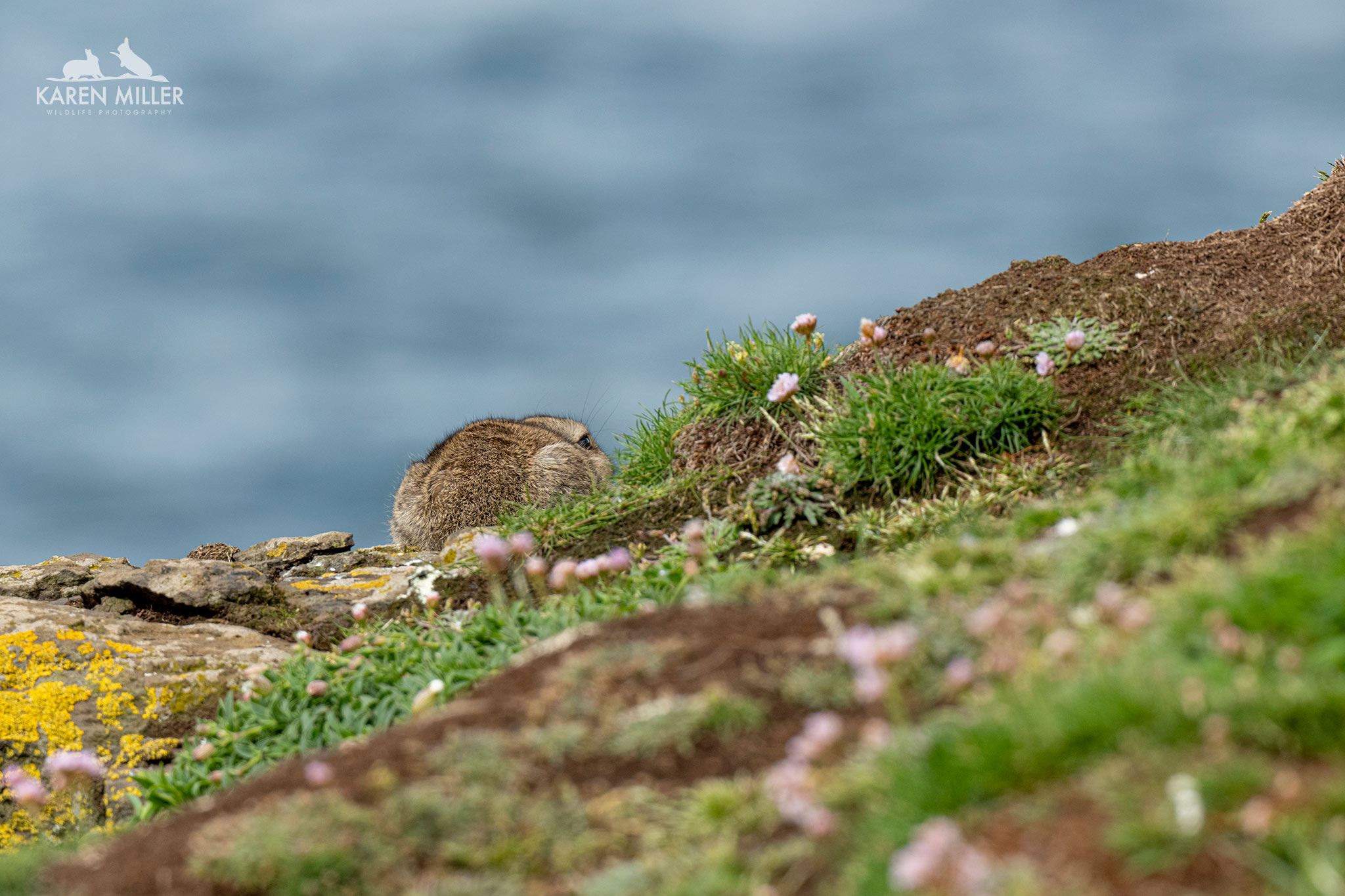
After another hour had passed, and conscious that the clock was counting down on my Lunga visit, I travelled further along the coast to Harp Rock. This is the area where the other seabirds (guillemots, shags, razorbills, fulmars and kittiwakes) tend to congregate as well as yet more puffins. The rock itself is the domain of the guillemots. I didn’t have time on this occasion, but it’s great to such sit back and watch the to-ings and fro-ings of these birds as they argue, crash land into each other and try and walk over and on top of others to get to their destination. You can see that in this video I produced when I went over last year:
On arriving here I instantly realised it was where I should have come earlier. There was so much going on and far more behaviours being exhibited by the puffins here.
I spent ages watching this pair. They were regularly billing (bumping their bills together) which is what many seabirds do to reaffirm the bond with their partner. Their version of kissing. This couple were so romantic, I felt all warm and fuzzy inside. The light at this point was very harsh and the grass a bit annoying, but I think the images clearly show their affection for one another.
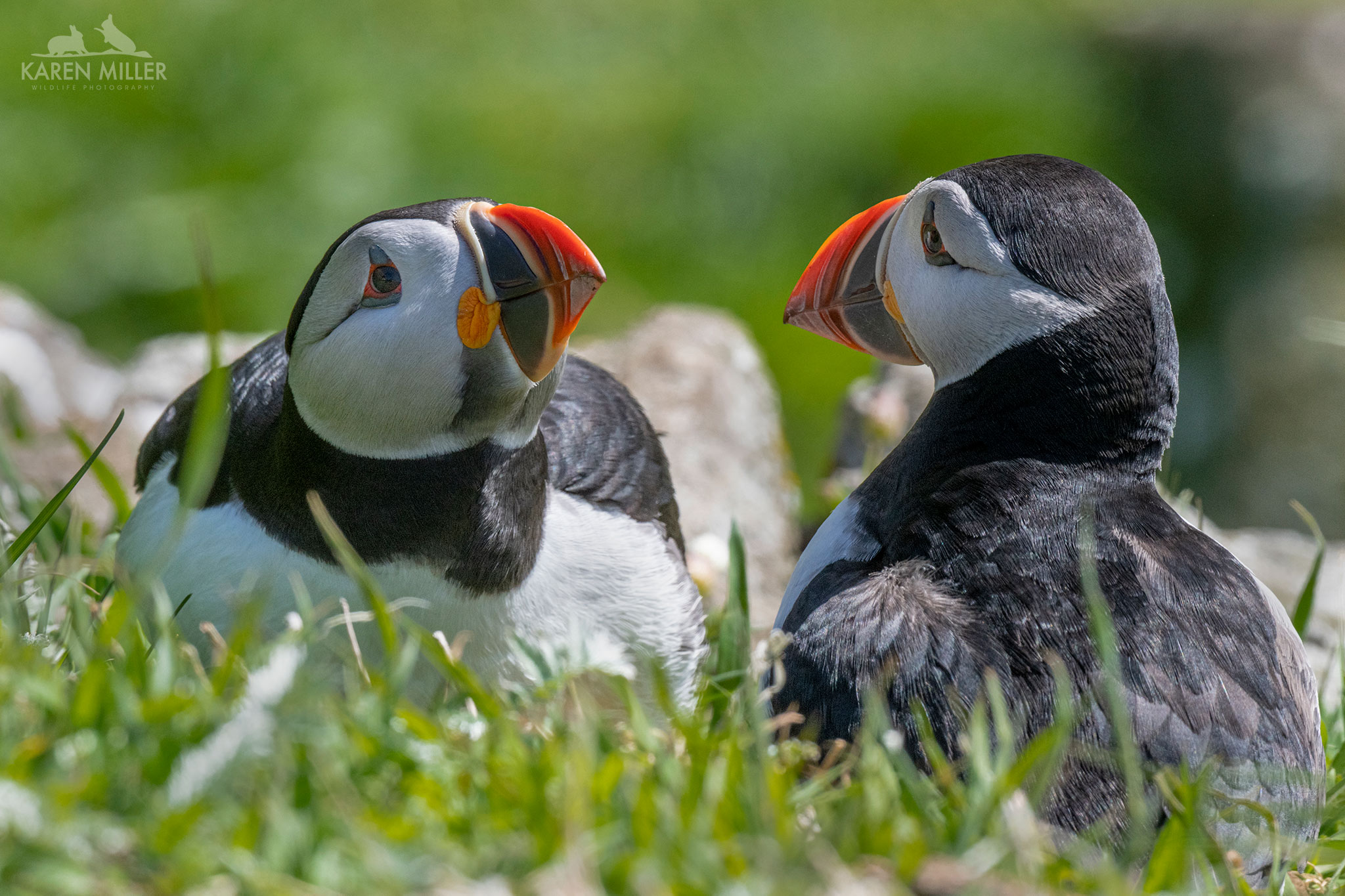
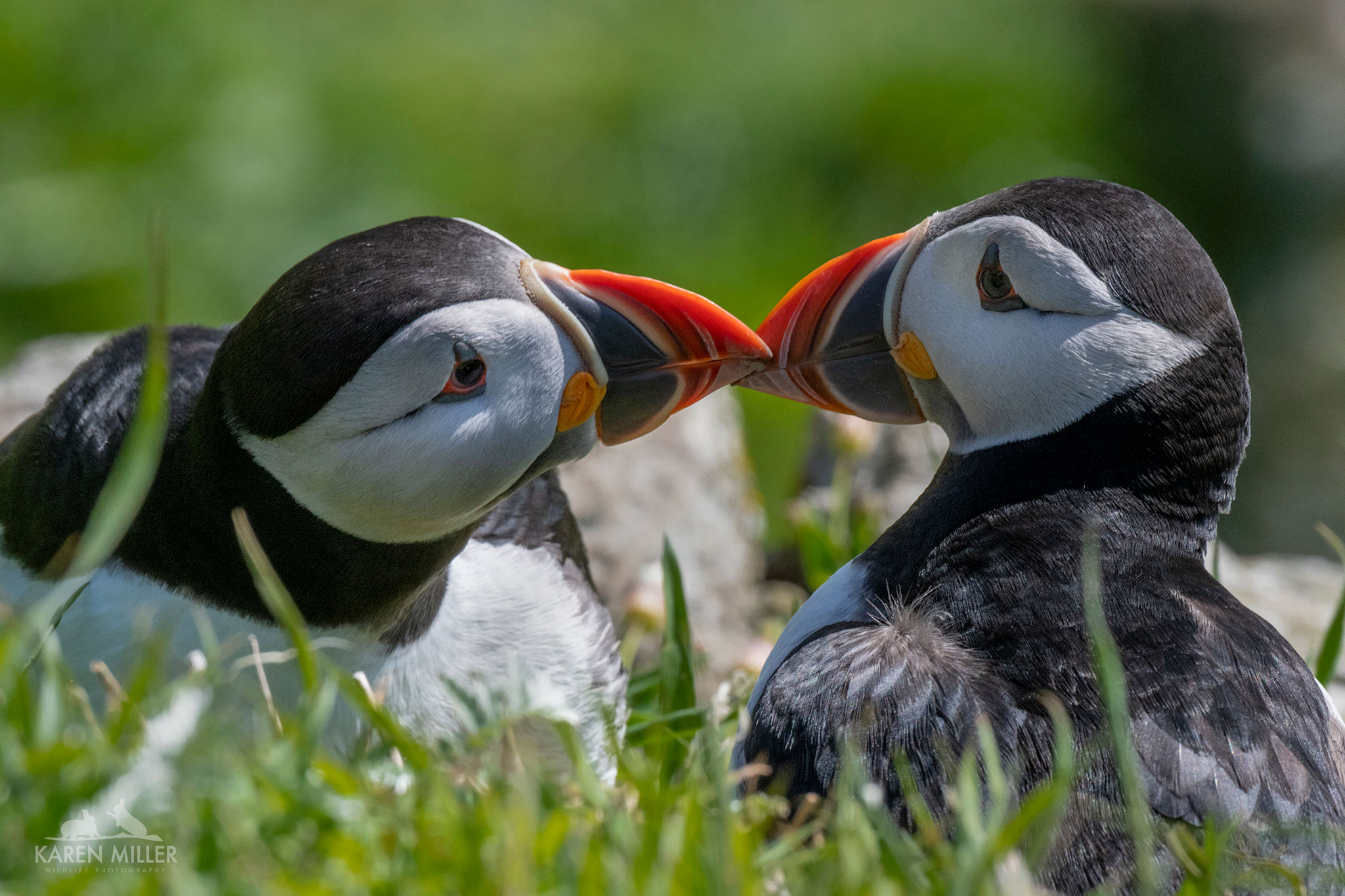
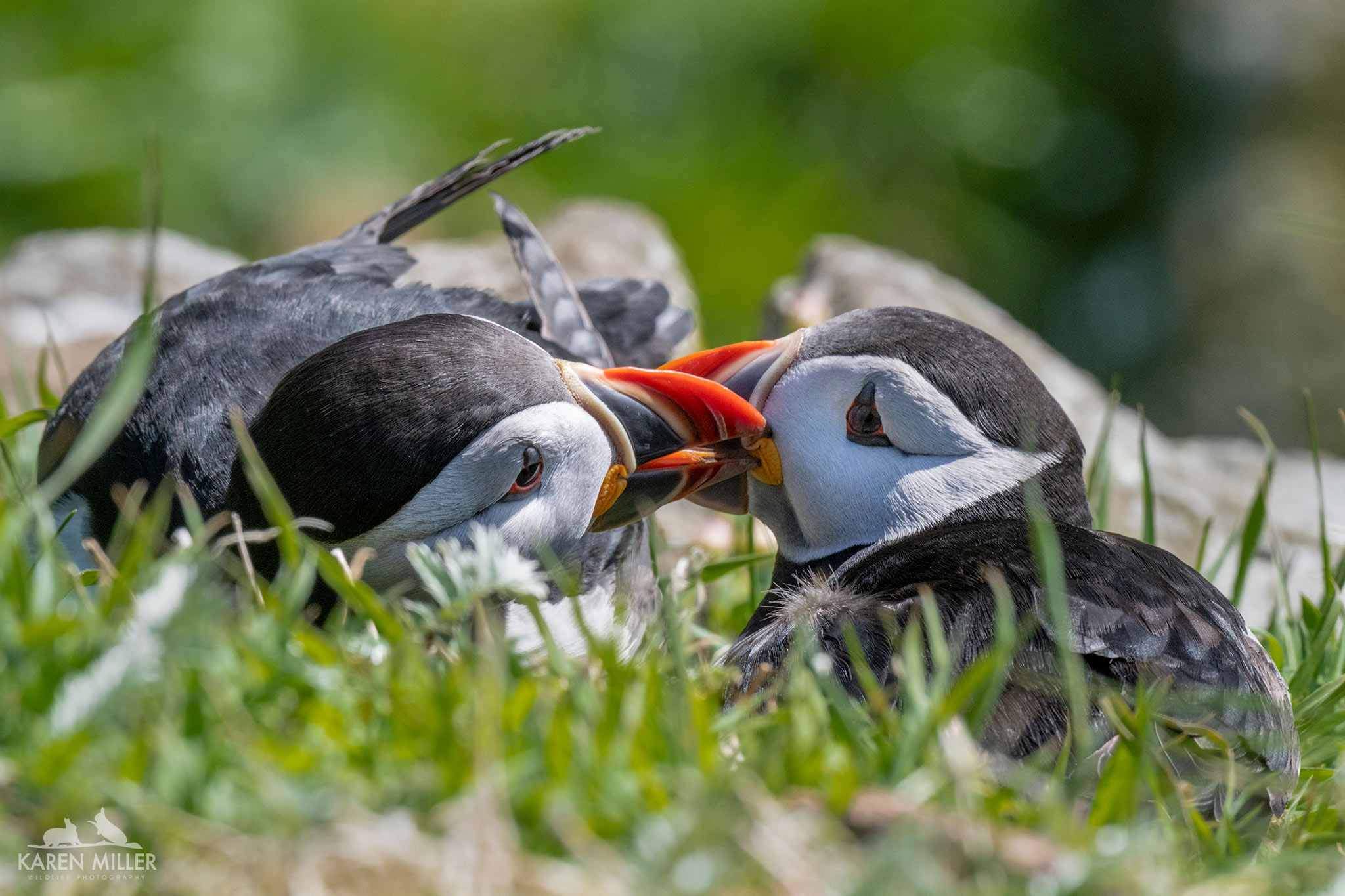
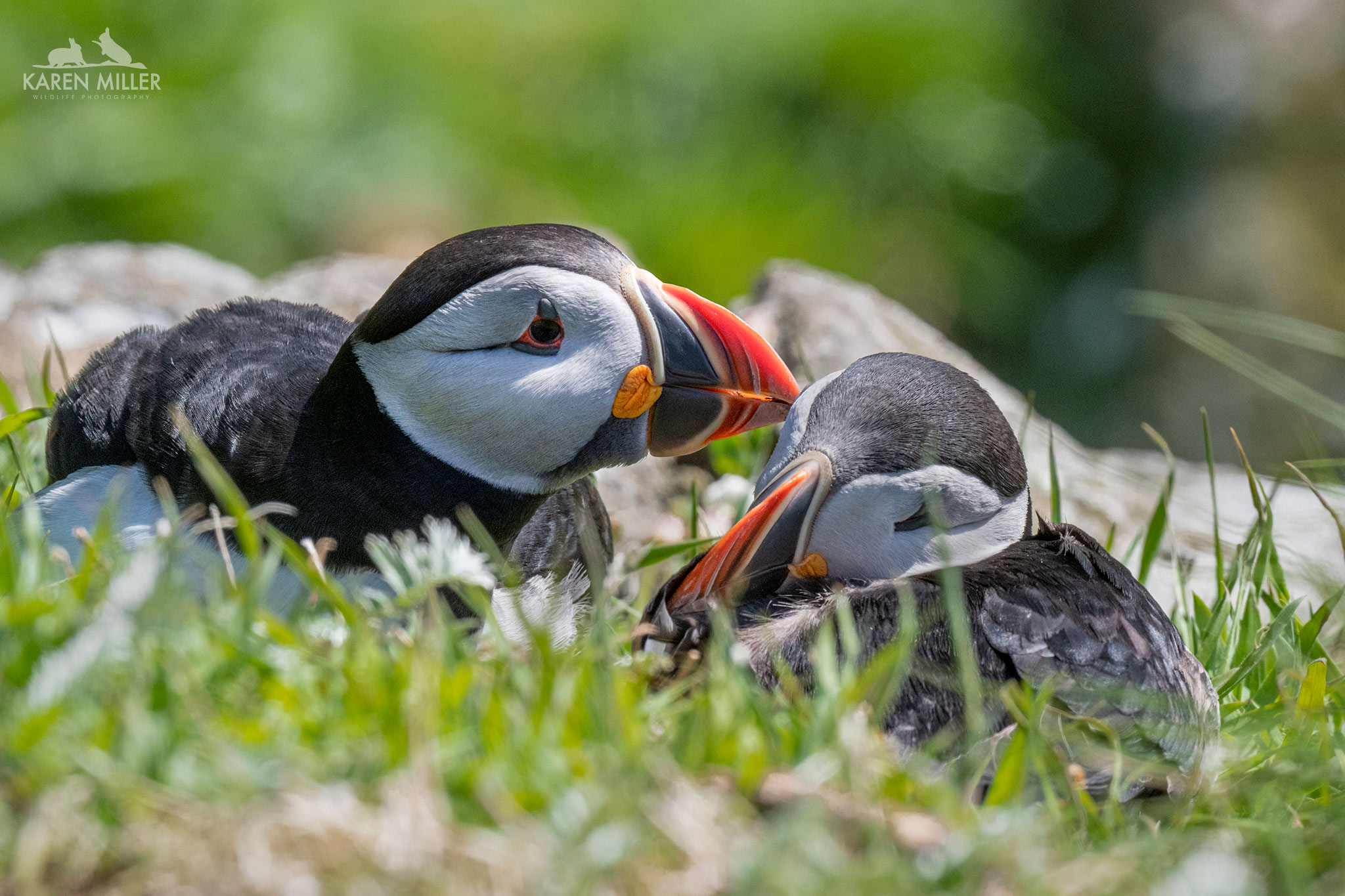

This made me chuckle though. A puffin trying desperately to impress another. He (I presume) was displaying to her but she was unimpressed.

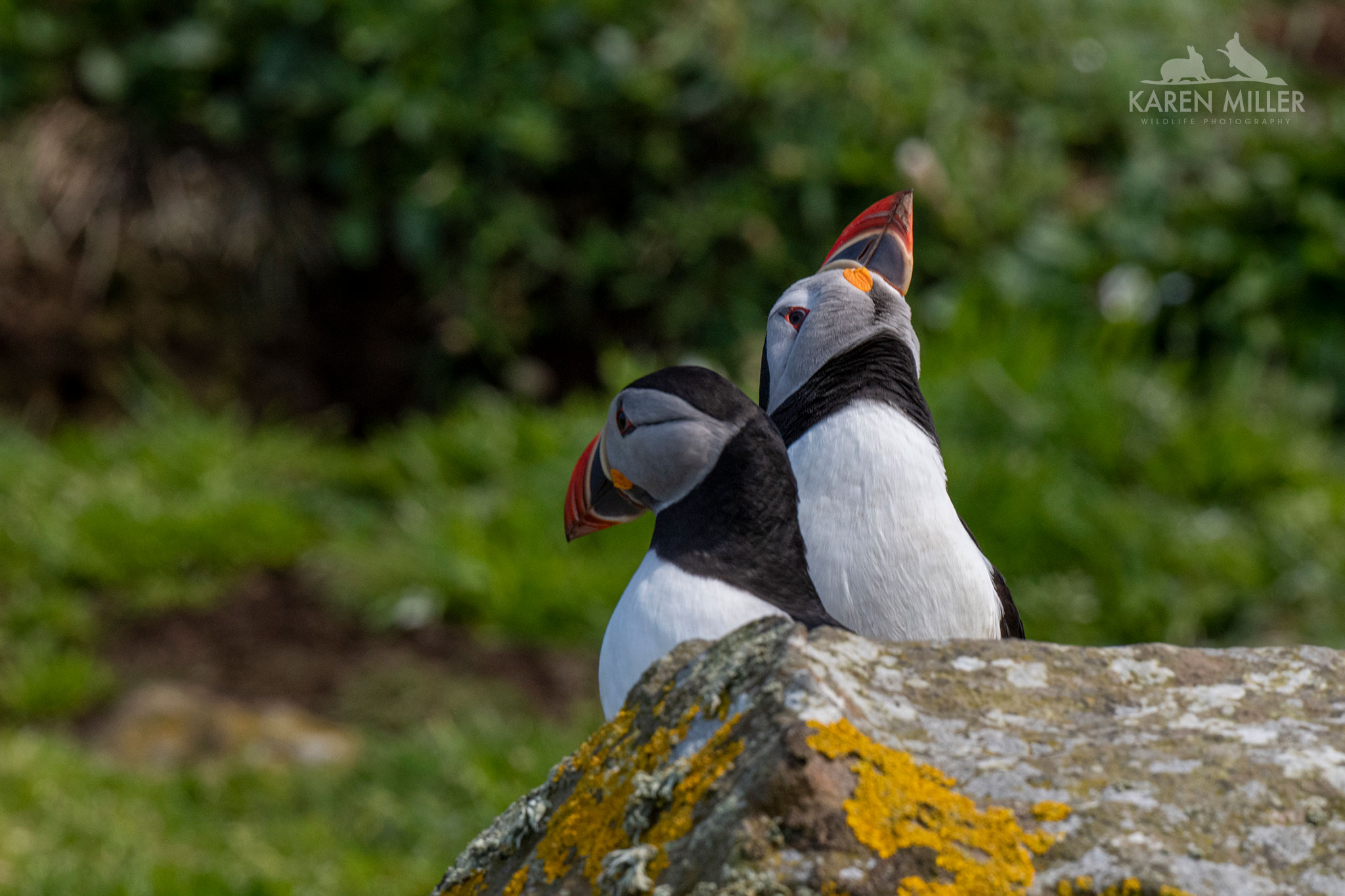
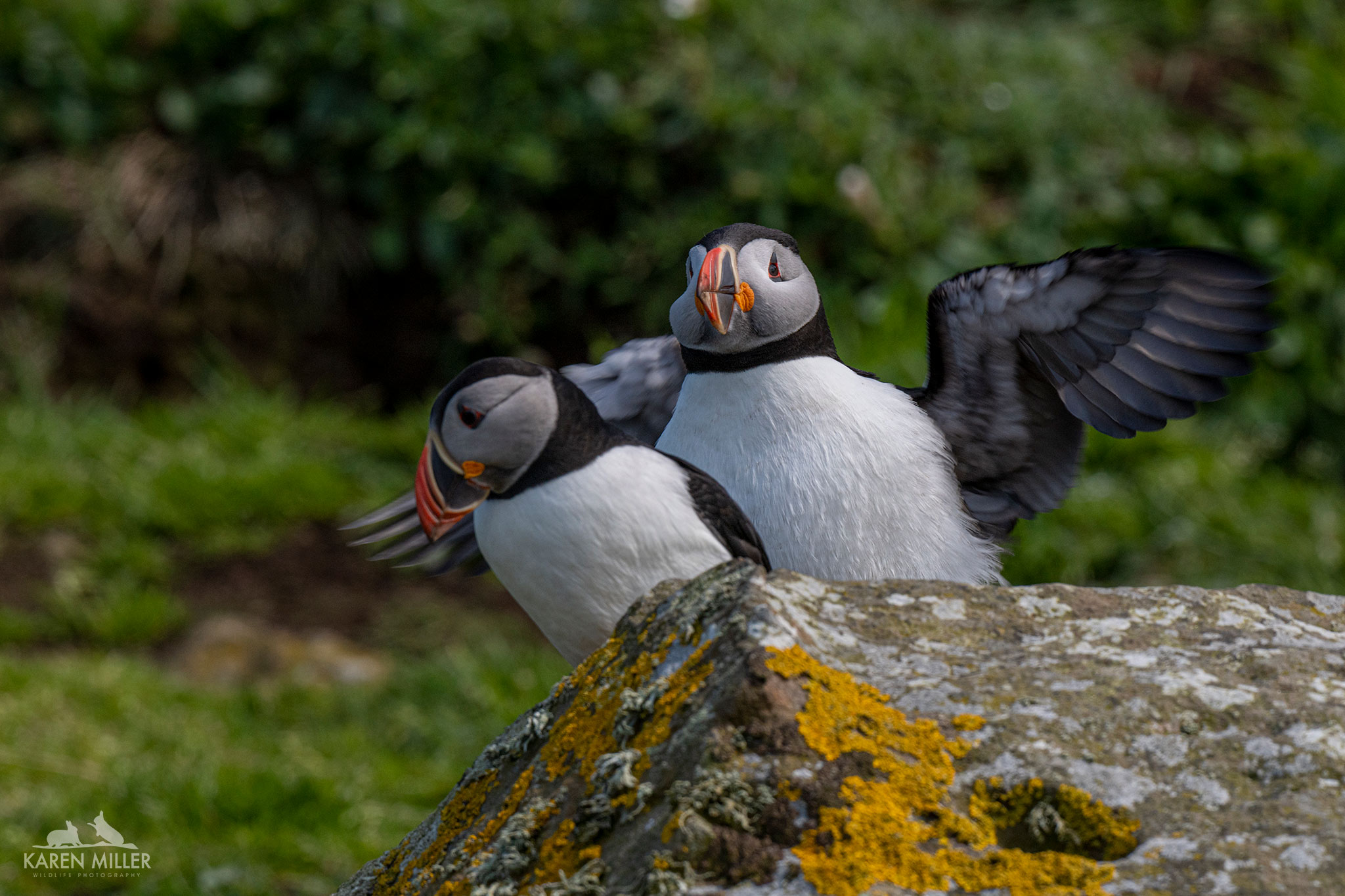
Puffins are such entertaining little birds so I’m constantly on the look out for amusing moments which capture something of their personality. It’s another of the things I enjoy about photographing them early season when they aren’t just concerned with providing for the pufflings.



The time flew by while I was on this part of the island and I had very little time to get back to the boat. As I passed the initial cliff edge the birds had all now appeared and I grabbed a few shots as I dashed by.
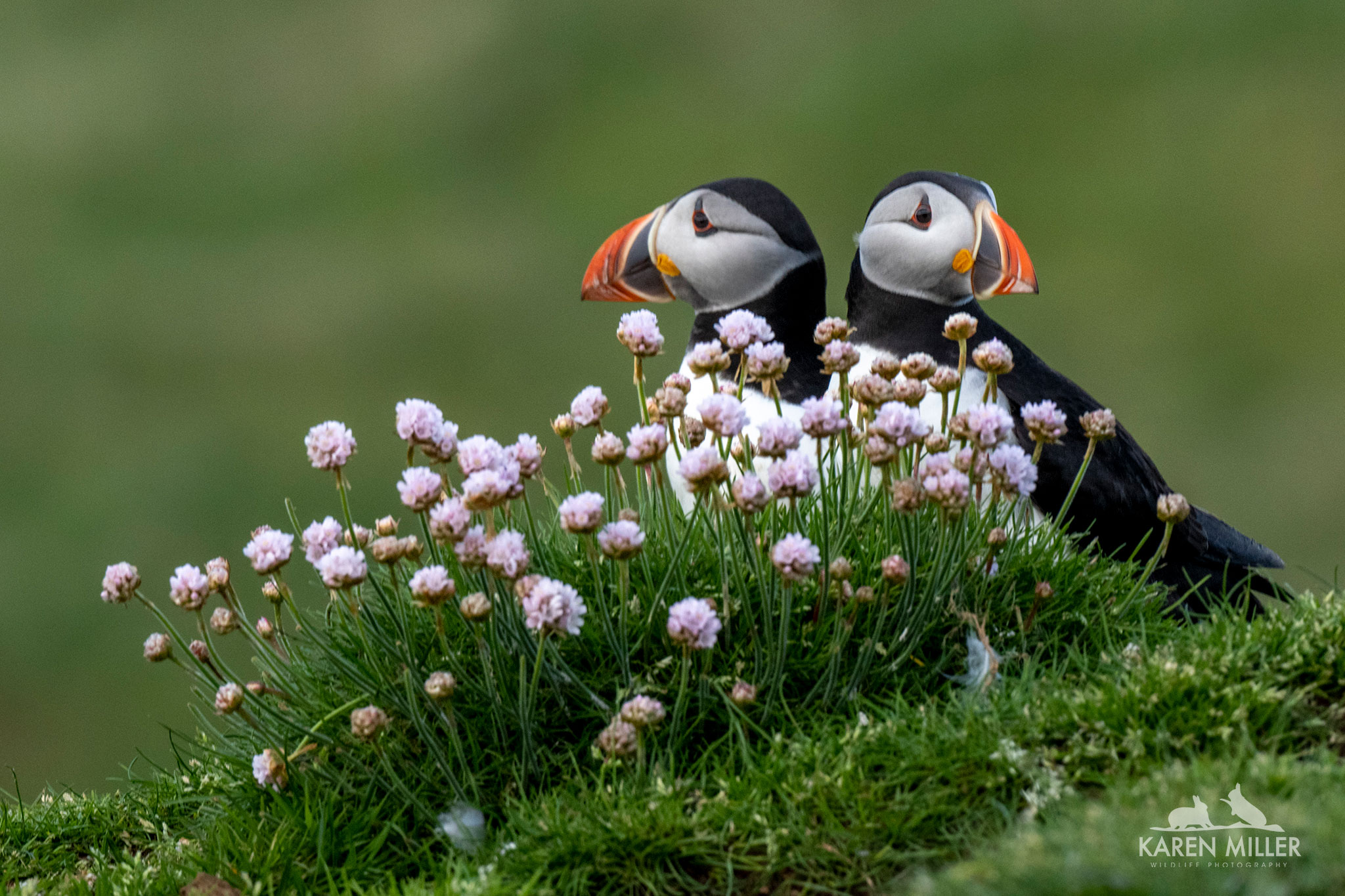

Many photographers spend much of their time attempting to photograph puffins in flight. It’s fun to do but in general I don’t find the resulting images particularly interesting. Plus, Lunga is such a pretty island, and even more so when the flowers are blooming and I’d rather focus on that rather than generic flight shots. It’s a personal thing, and I feel the same way about most bird in flight shots, they just aren’t very emotive. Being able to do it though is a great skill to have. Many of the mirrorless camera these days have ok to great eye-tracking which I believe makes it easier to track a flying bird and keep it in focus throughout the sequence. I don’t have one of those though (the Z50 has some degree of eye-tracking but in the little I’ve played with it, it isn’t great). The D850 (and D500 which I didn’t bring to Lunga) have a focus mode “group”. For flight shots I switch to this from my usual spot focus setting as it gives a bit more leeway when there’s a clear background. A fast shutter speed is essential and use as narrow an aperture as you can to give more chance of having the bird in focus. The easiest way to photograph the puffins (and other birds) in flight is to pick them up when a fair distance away and then track them in, photographing as they get closer (ensure you’re using a continuous focus mode). If you attempt to focus on a moving bird when it’s near you it’s very difficult as it’s moving so fast.
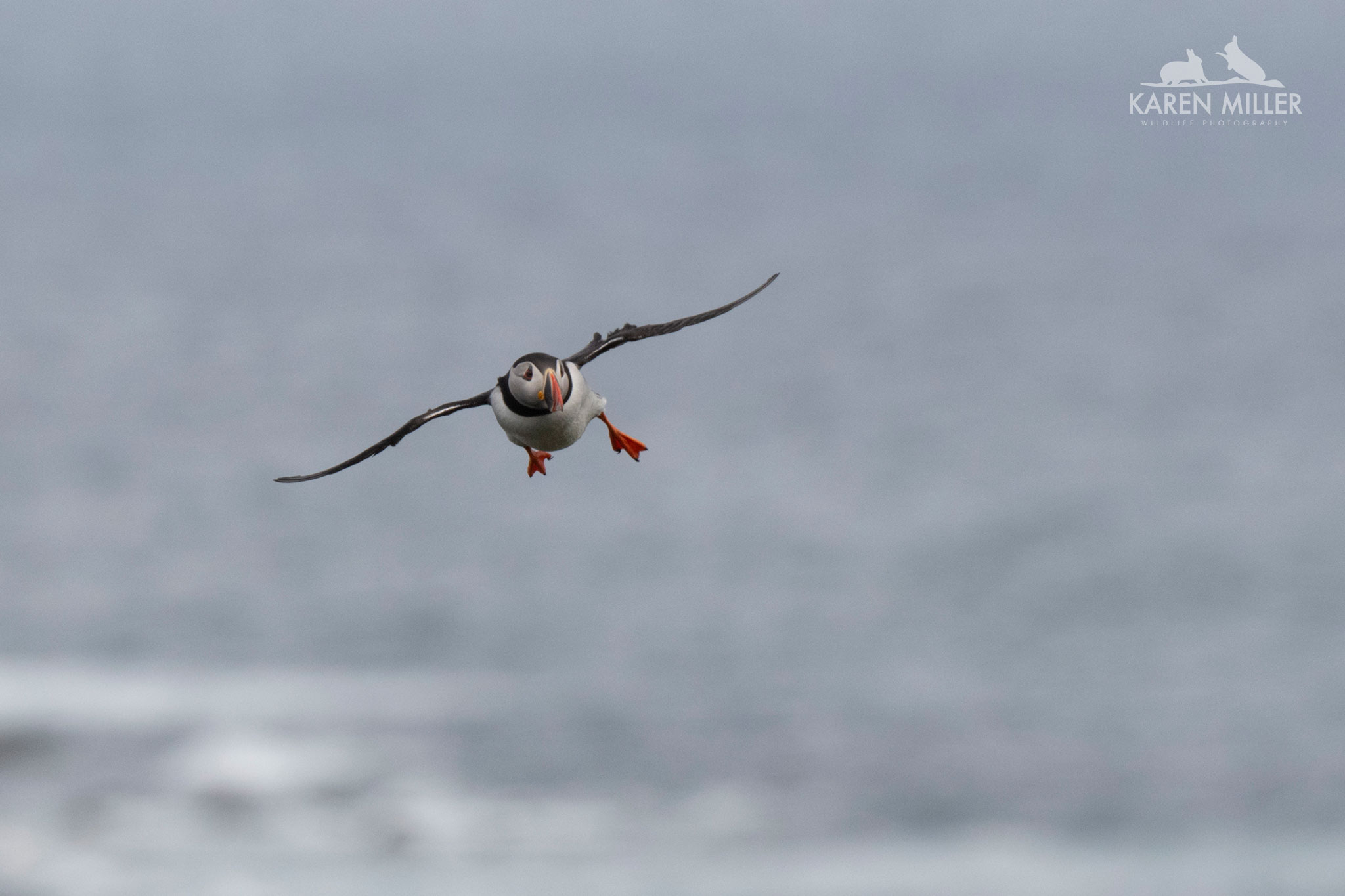

For birds flying from left to right (or the opposite) the same technique applies but you’ll find they are considerably more difficult to track as they zoom past you. In this situation I would suggest photographing those at a distance from you to make it a little easier to keep your camera on the bird. I try and include some of the background in the image rather than just sky, it makes the images a wee bit more interesting.

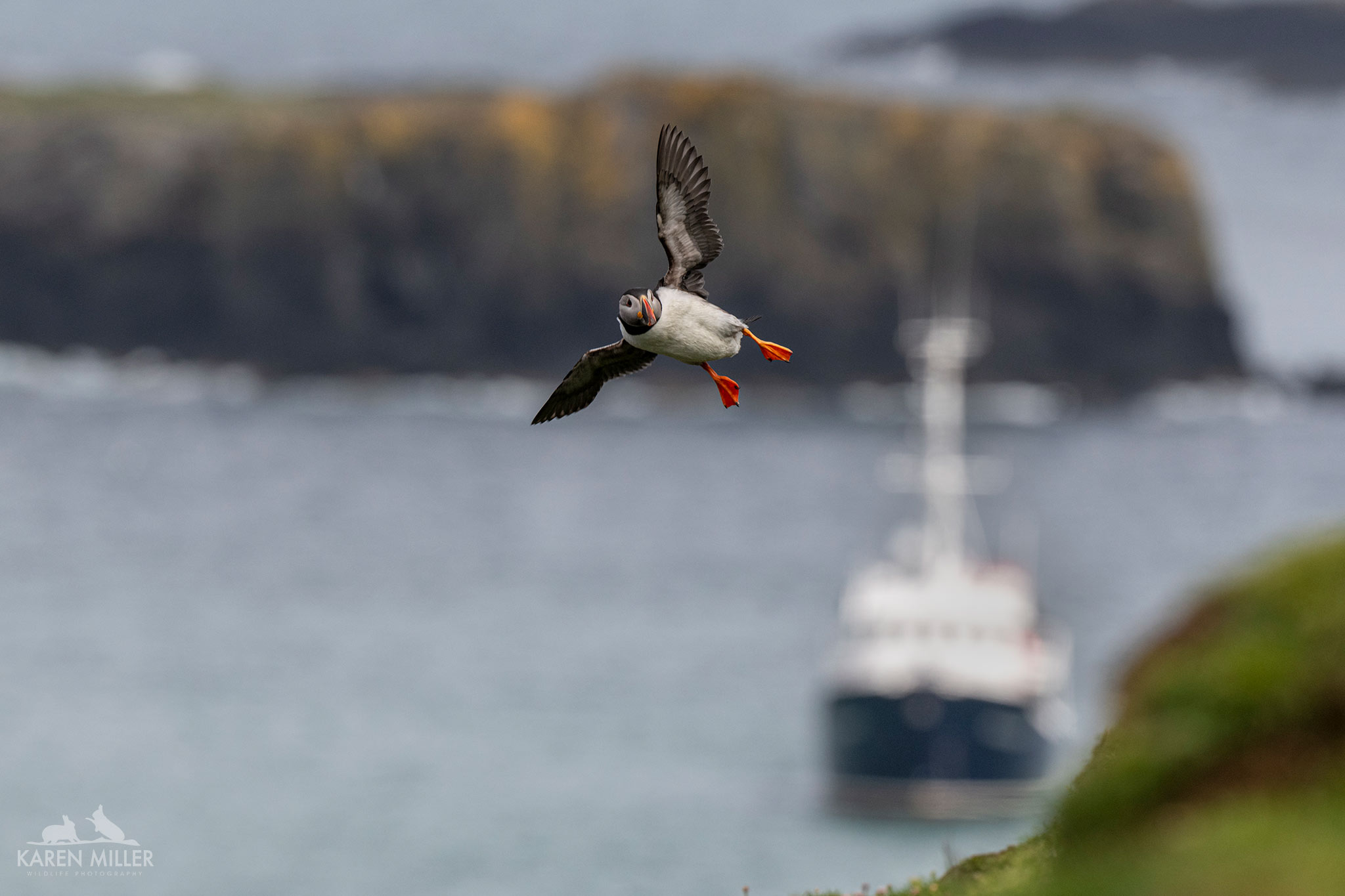

Every so often it all comes together. These are my two favourite flight shots from this trip.
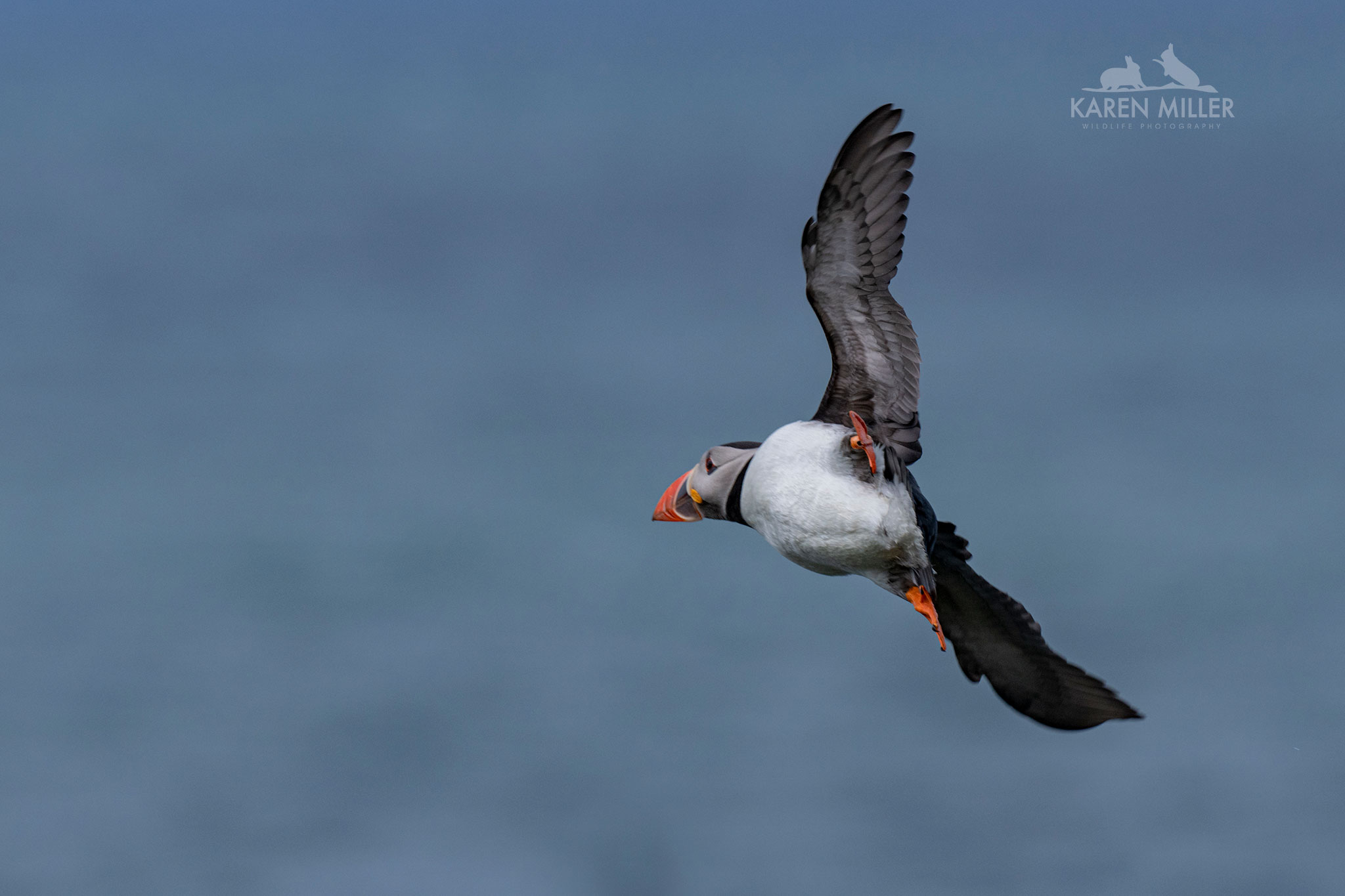
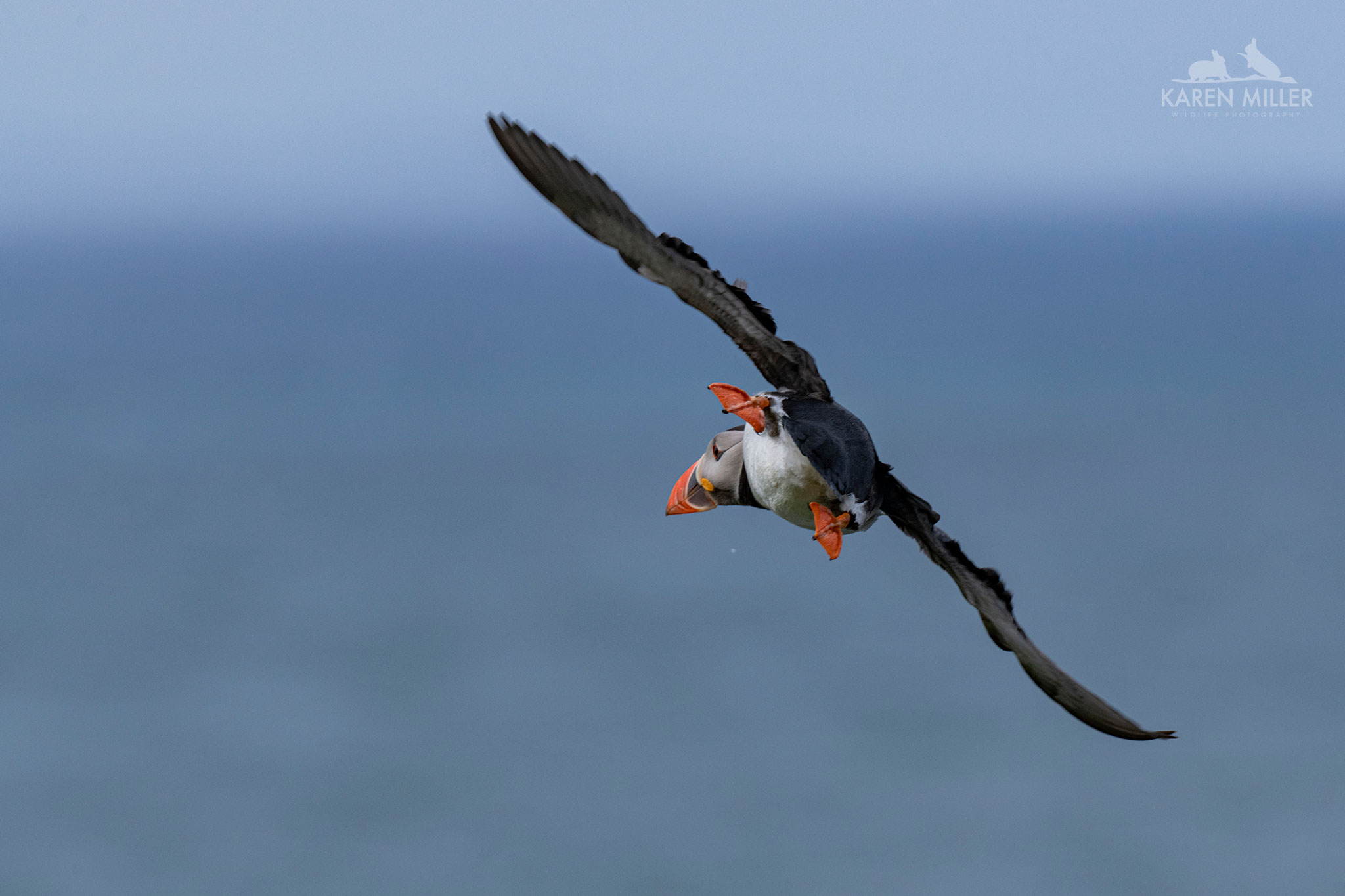
You might be wondering by now if I photographed any of the other birds? Here are some shags. They were nesting and I chose not to disturb those ones as they don’t like it very much, but a few were hanging out on the cliffs. I love the colour of the water in this image.

I did spend a fair amount of time watching and photographing the razorbills. I always feel a little sorry for these birds as they are similar to puffins in many respects but just aren’t as colourful so are often ignored. They do have vibrant yellow mouths though and I think they look very handsome. Some of my favourite images from Lunga this time were of these birds. I captured these two mating.
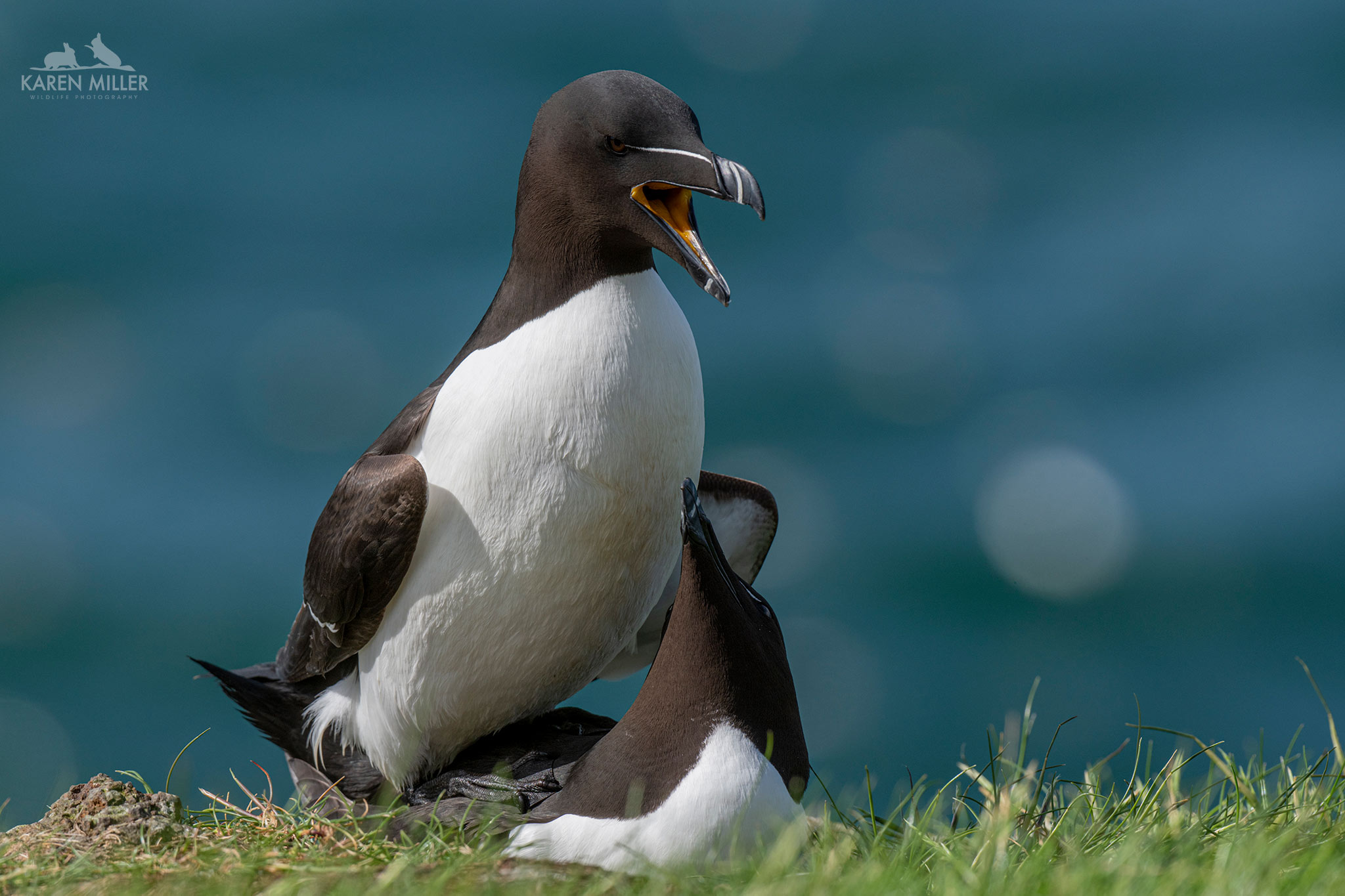
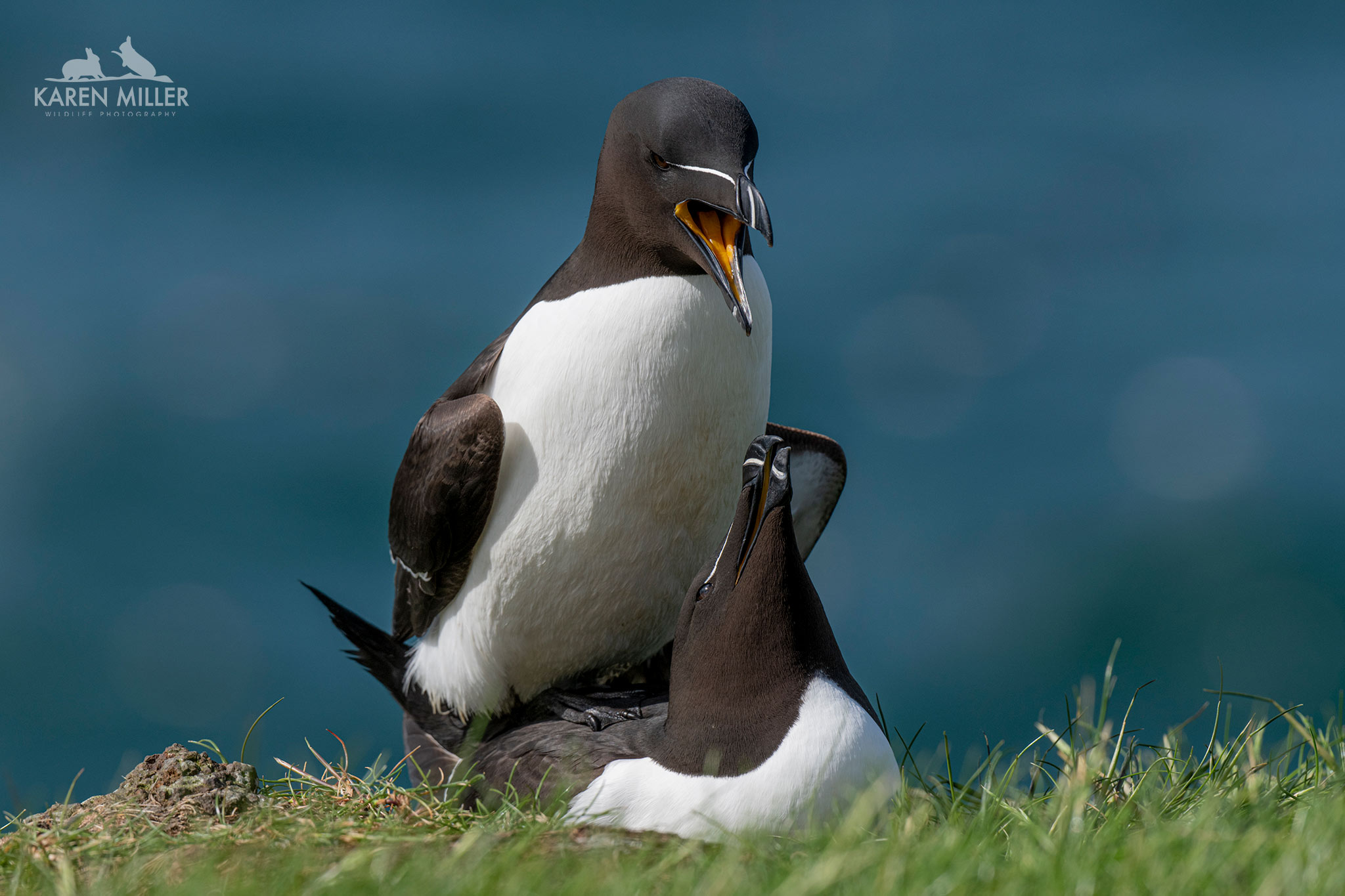
And this affectionate couple.


I like this one too

I apologise for the many many puffin images – this is just the tip of the iceberg, I took a terrifying number. I’ll leave you with this one, I wonder what they are plotting?
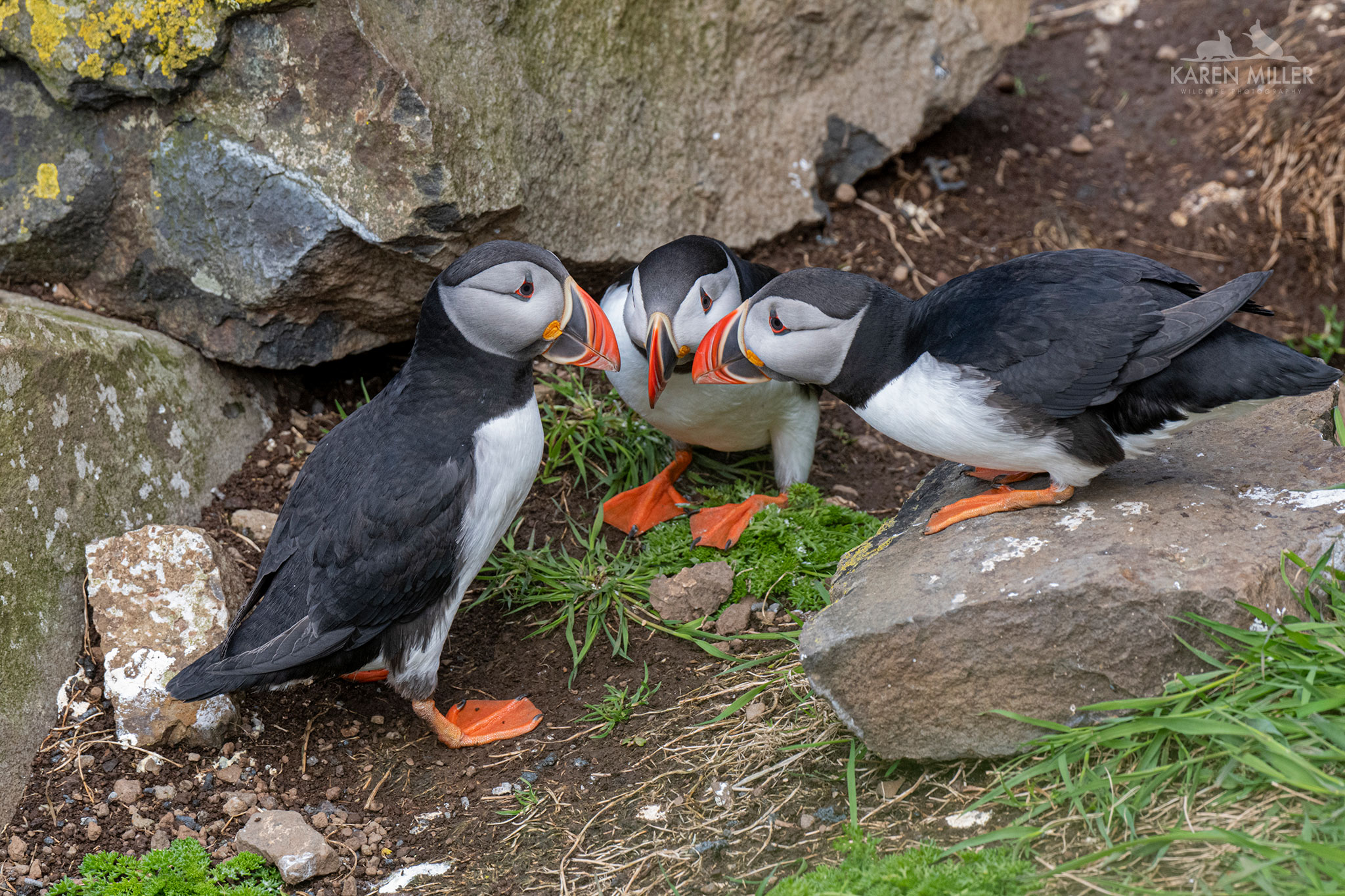
Finally, a little video of the puffins (with cameo appearances from razorbills and guillemots). I didn’t have much time for filming this time and it was really a bit too bright. However, please enjoy. The final clip is my favourite – with the sound up you can hear me laughing.

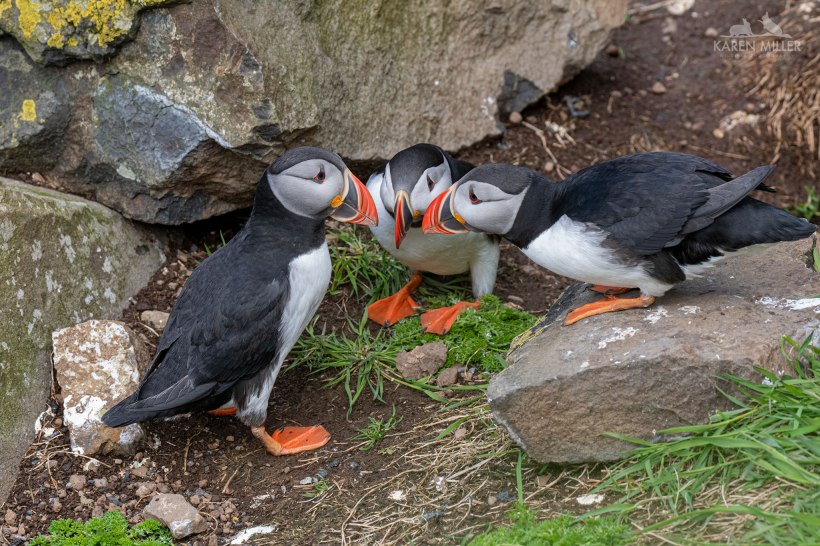
Delightful & interesting as usual.
LikeLike